Asian Flags
Discover the flags of all 46 Asian nations. From the rising sun of Japan to the dragon of Bhutan, the crescent moons of Islamic nations to the vibrant designs of Southeast Asia, explore the diverse symbolism of the world's largest continent.
← Back to All CountriesAll Asian Countries
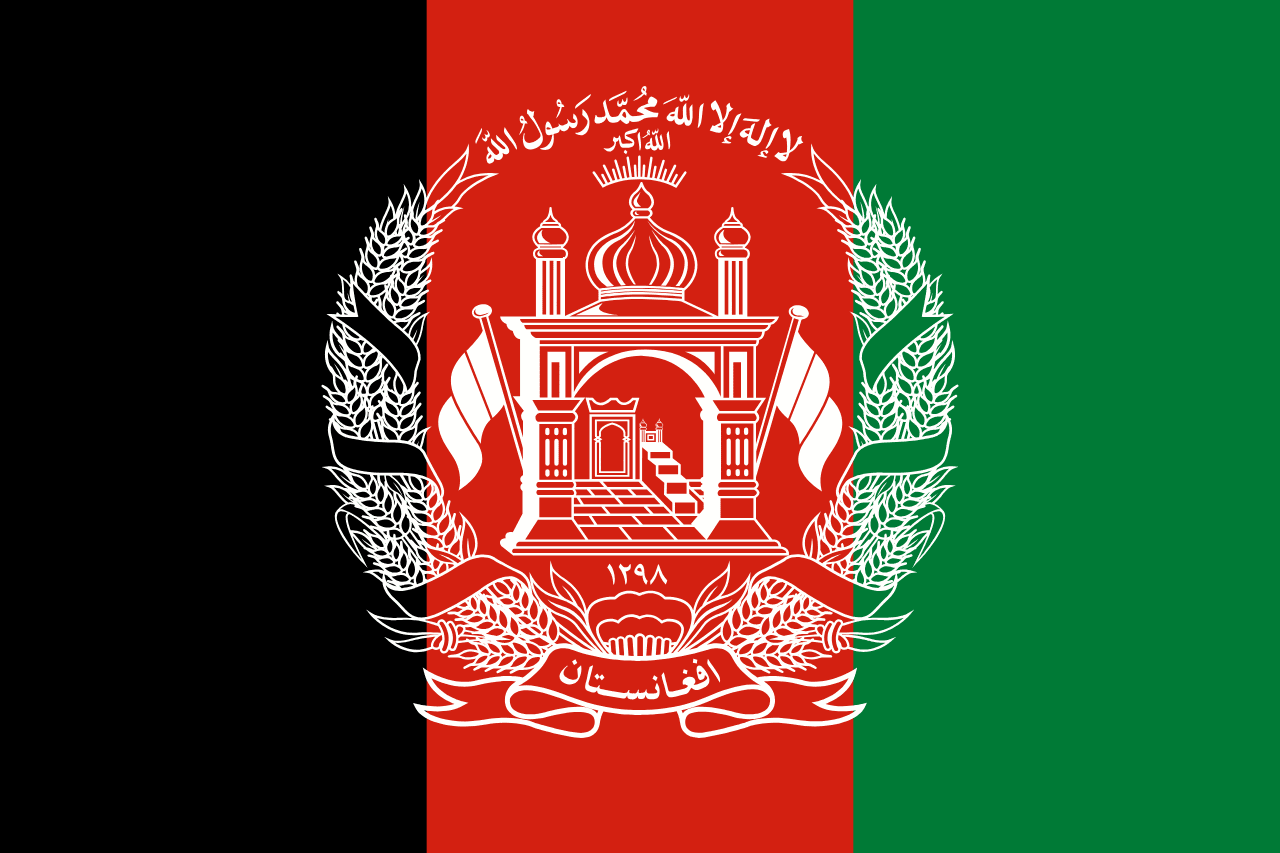
Afghanistan
Adopted 2021
Few nations have worn their history so visibly upon their flags as Afghanistan. In just over a century, the country has cycled through more banners than any other modern state, each design mirroring the upheavals of power, ideology, and identity that have defined its story. The current flag, a stark white field bearing the Shahada in bold black script, was restored by the Taliban in 2021. To outsiders, its simplicity may appear severe, even austere. Yet within its minimal form lie deep layers of meaning: an assertion of faith, a claim to authority, and a conscious rejection of the ornate tricolors and emblems that preceded it. To understand this flag is to glimpse not only Afghanistan’s turbulent politics, but also the powerful role of religion, symbolism, and history in shaping its national identity.
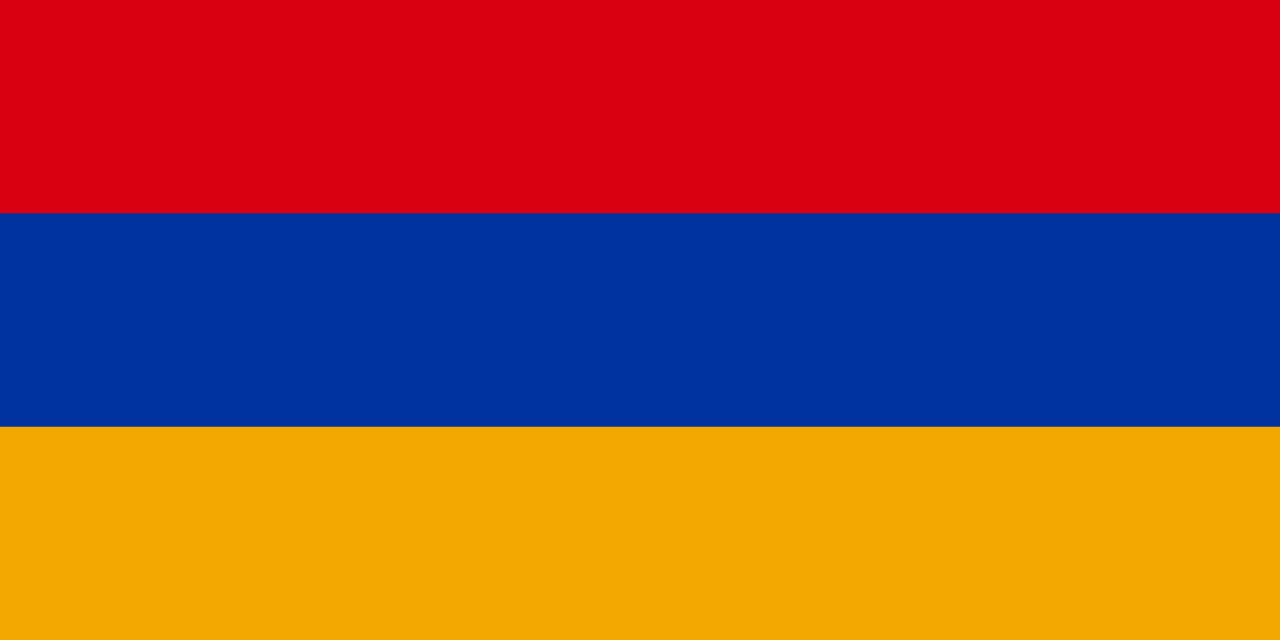
Armenia
Adopted 1991
Three horizontal stripes of red, blue, and orange (apricot), representing the blood shed for independence, the Armenian sky and hope for peace, and the fertile land and hardworking nature of the Armenian people, based on the flag of the First Republic of Armenia (1918-1920).
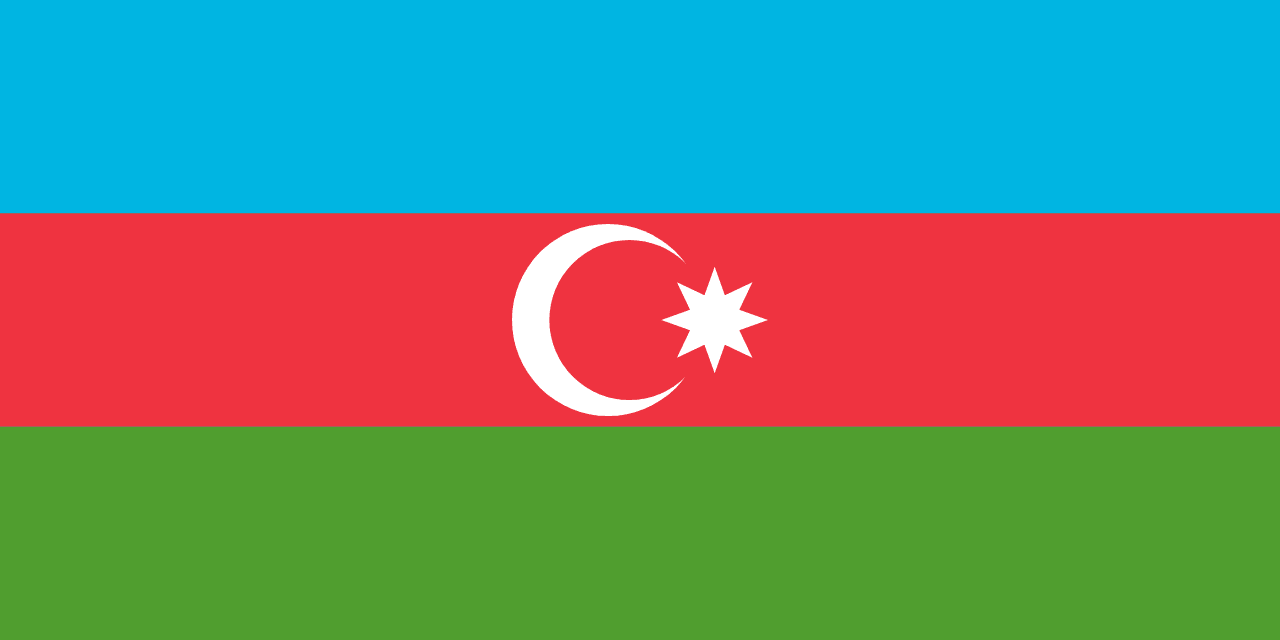
Azerbaijan
Adopted 1991
Three horizontal stripes of blue, red, and green with a white crescent and eight-pointed star in the center, representing Turkic heritage, modernity and progress, Islamic tradition, and the eight branches of the Turkic peoples, designed during the brief independence period of 1918-1920.

Bahrain
Adopted 2002
A white band on the hoist side separated from a red field by a serrated line with five triangular points, representing peace and the five pillars of Islam, while the red represents the Kharijite sect of Islam that historically dominated the region.
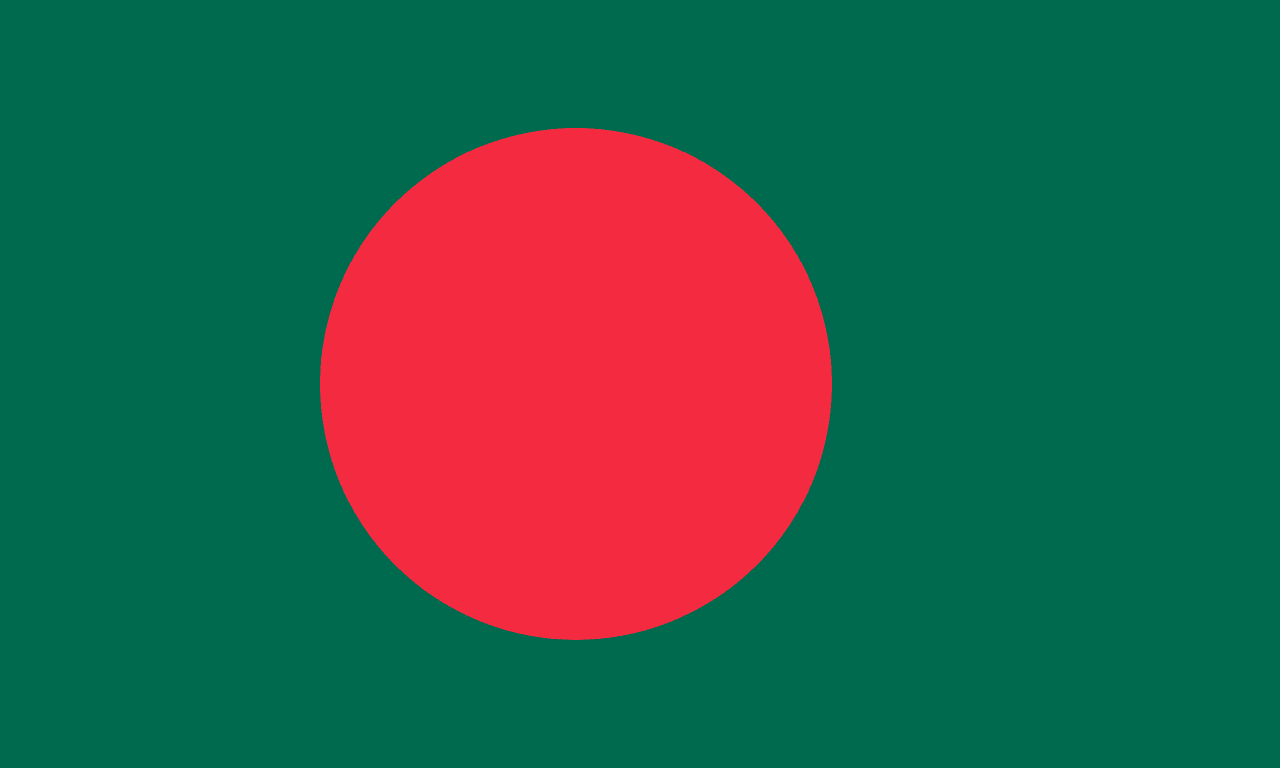
Bangladesh
Adopted 1972
A dark green field with a red circle positioned slightly toward the hoist side, representing the lush Bengali landscape and the sun rising over Bengal, as well as the blood shed during the Liberation War of 1971 and the new dawn of independence.
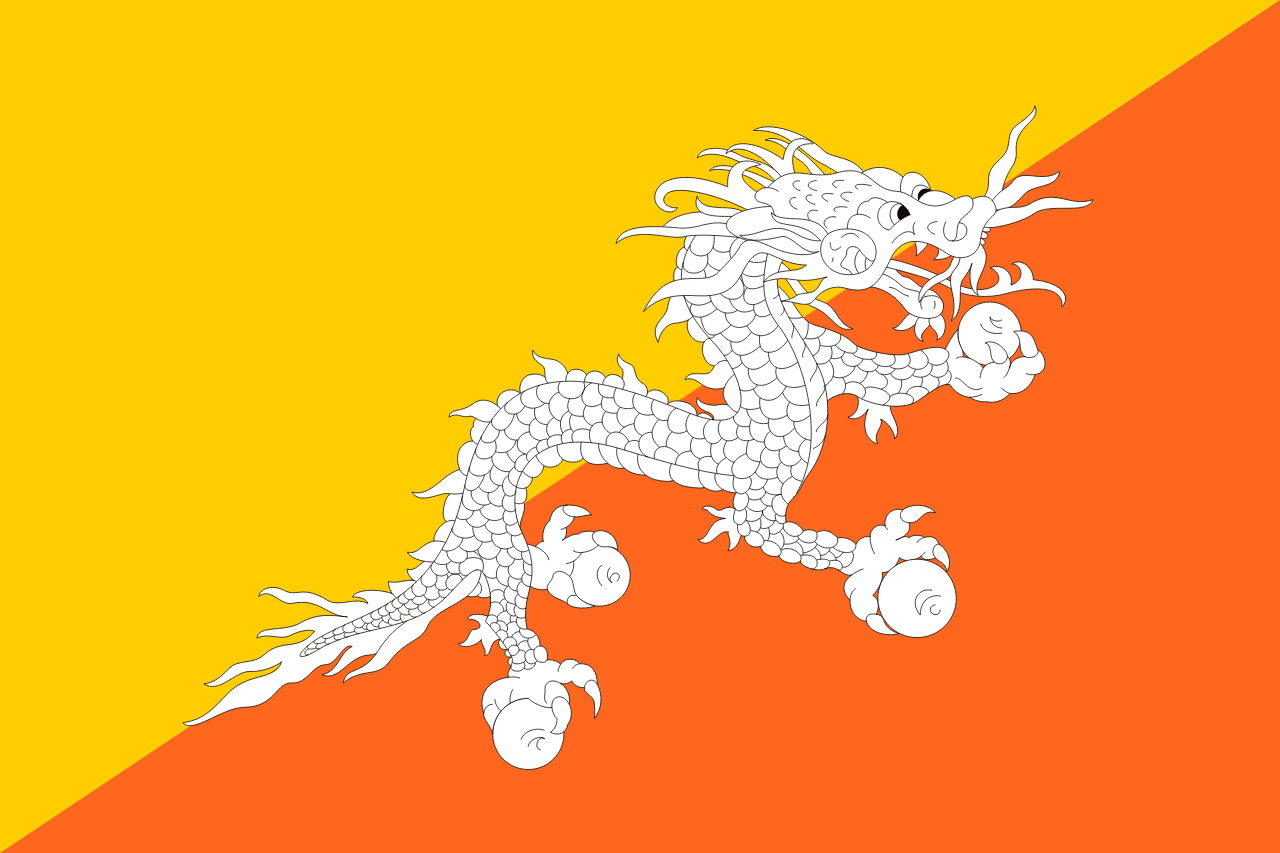
Bhutan
Adopted 1969
Divided diagonally with orange in the upper triangle and yellow in the lower triangle, featuring a white dragon (Druk) in the center holding jewels in its claws, representing the spiritual and temporal power of Bhutan and the Thunder Dragon that gives the country its name 'Land of the Thunder Dragon.'
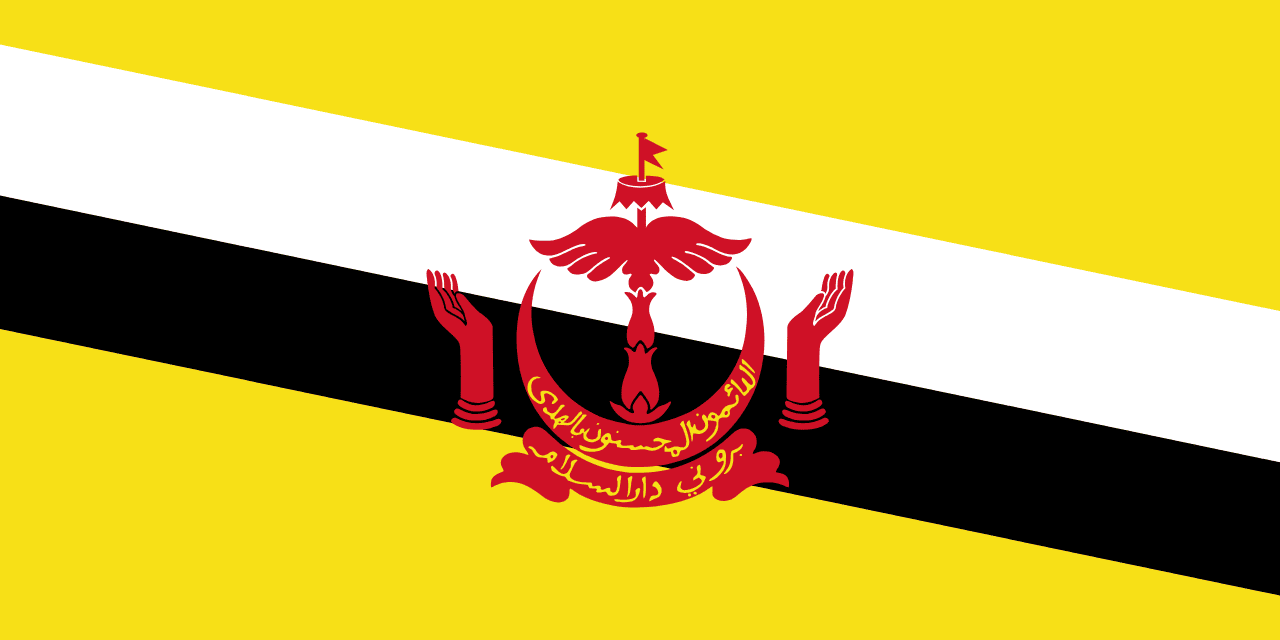
Brunei
Adopted 1959
A yellow field with two diagonal stripes of white and black, featuring the national coat of arms in red in the center, representing the Sultan's sovereignty, the state's prosperity, and the nation's commitment to peace and Islamic values.
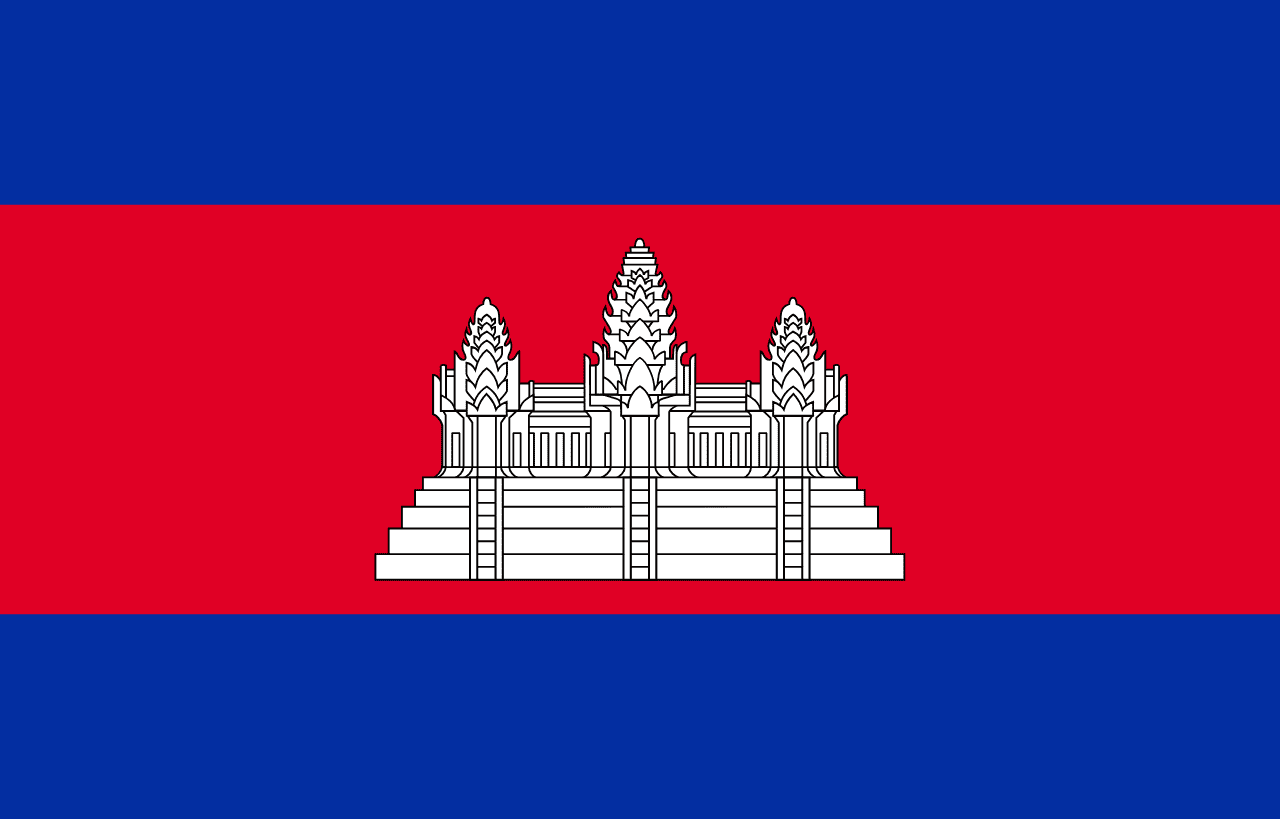
Cambodia
Adopted 1993
Three horizontal stripes of blue, red (double width), and blue with a white depiction of Angkor Wat temple in the center, representing the nation, the king, and the sacred temple that symbolizes Cambodia's glorious past and cultural heritage.
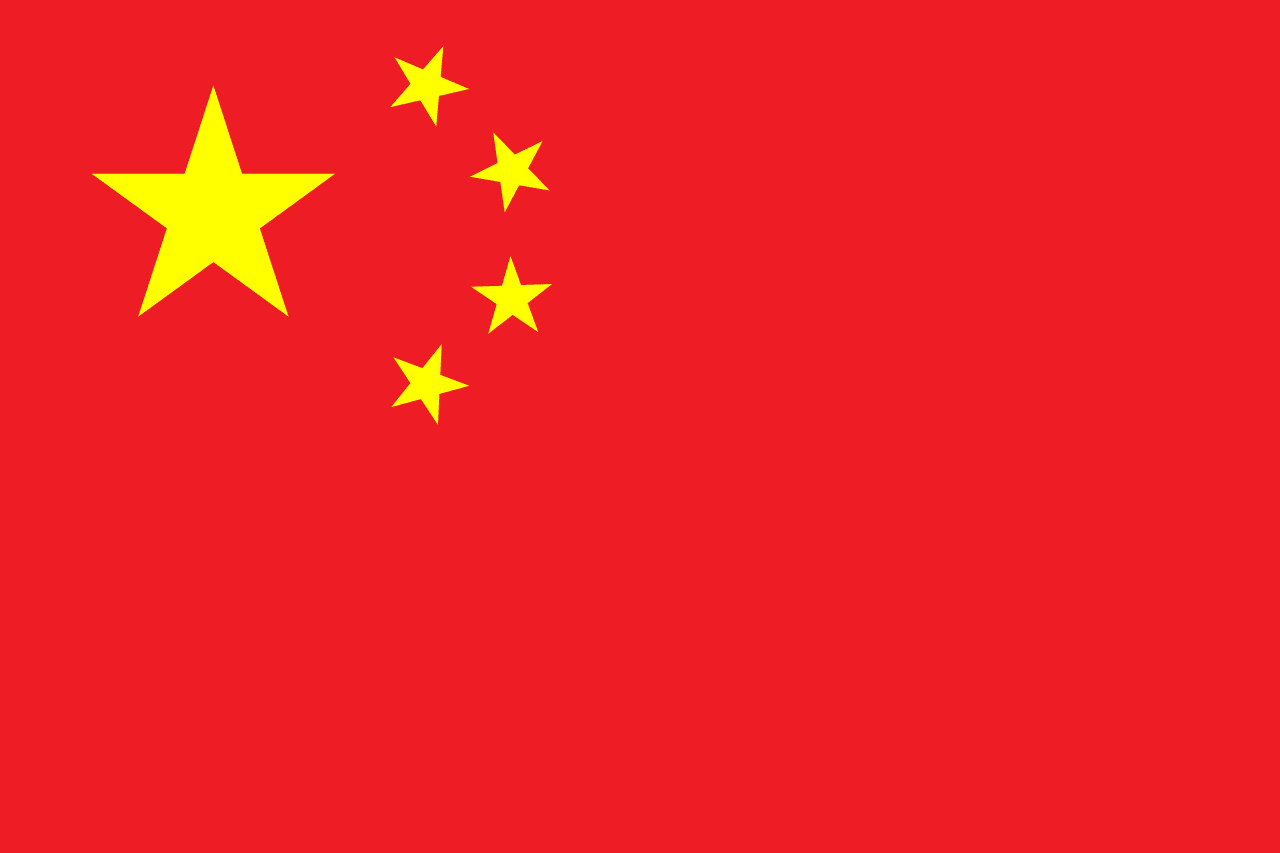
China
Adopted 1949
Red field with five golden stars representing unity under Communist leadership and the four social classes.
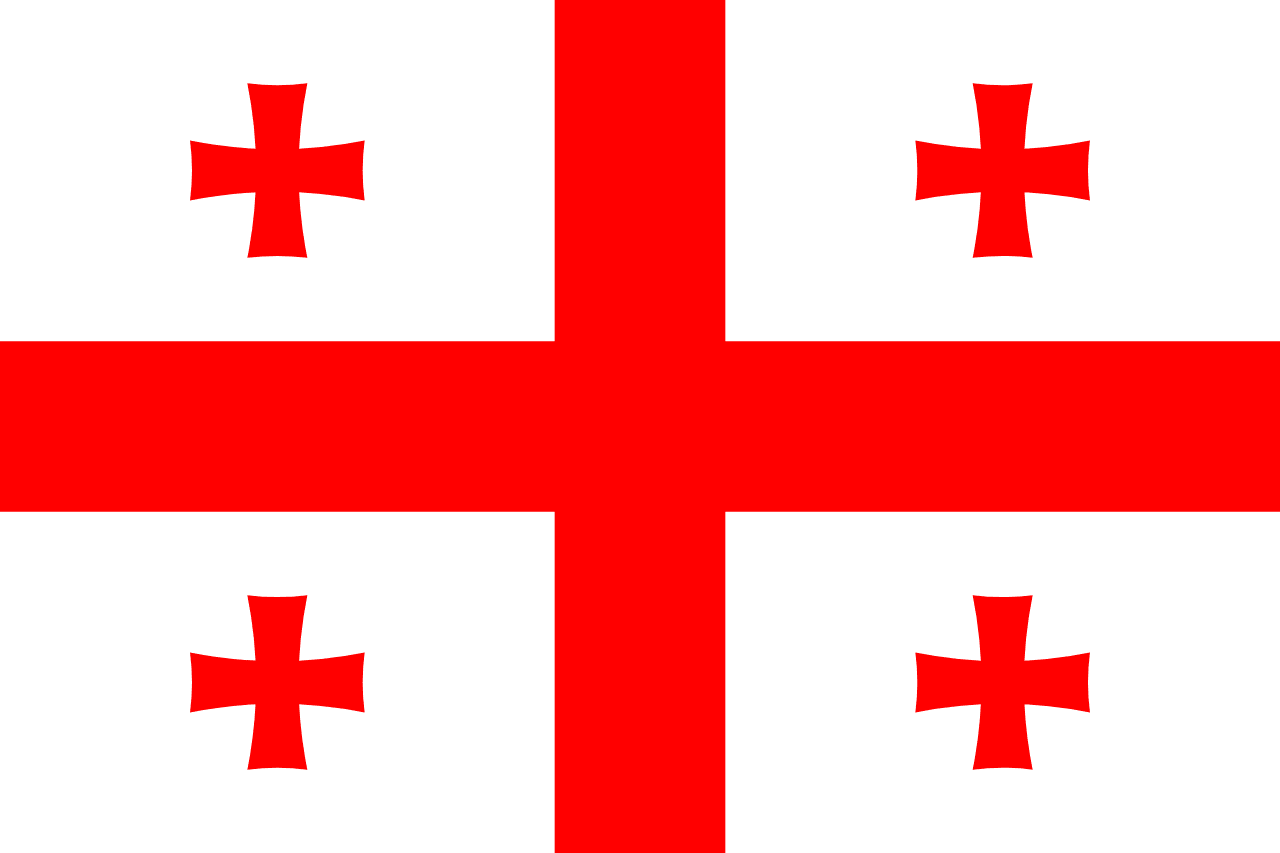
Georgia
Adopted 2004
A white field with a large red Saint George's cross extending to the edges and four smaller red Bolnisi crosses in each quadrant, representing Georgia's ancient Christian heritage and the five wounds of Christ.

India
Adopted 1947
Three horizontal stripes of saffron, white, and green with a navy blue Ashoka Chakra (24-spoke wheel) in the center, representing courage and sacrifice, peace and truth, faith and fertility, and the eternal wheel of law in Indian philosophy.

Indonesia
Adopted 1945
Two horizontal stripes of red over white, known as 'Sang Saka Merah-Putih' (The Sacred Red and White), representing the courage and purity of the Indonesian people and their struggle for independence from colonial rule.
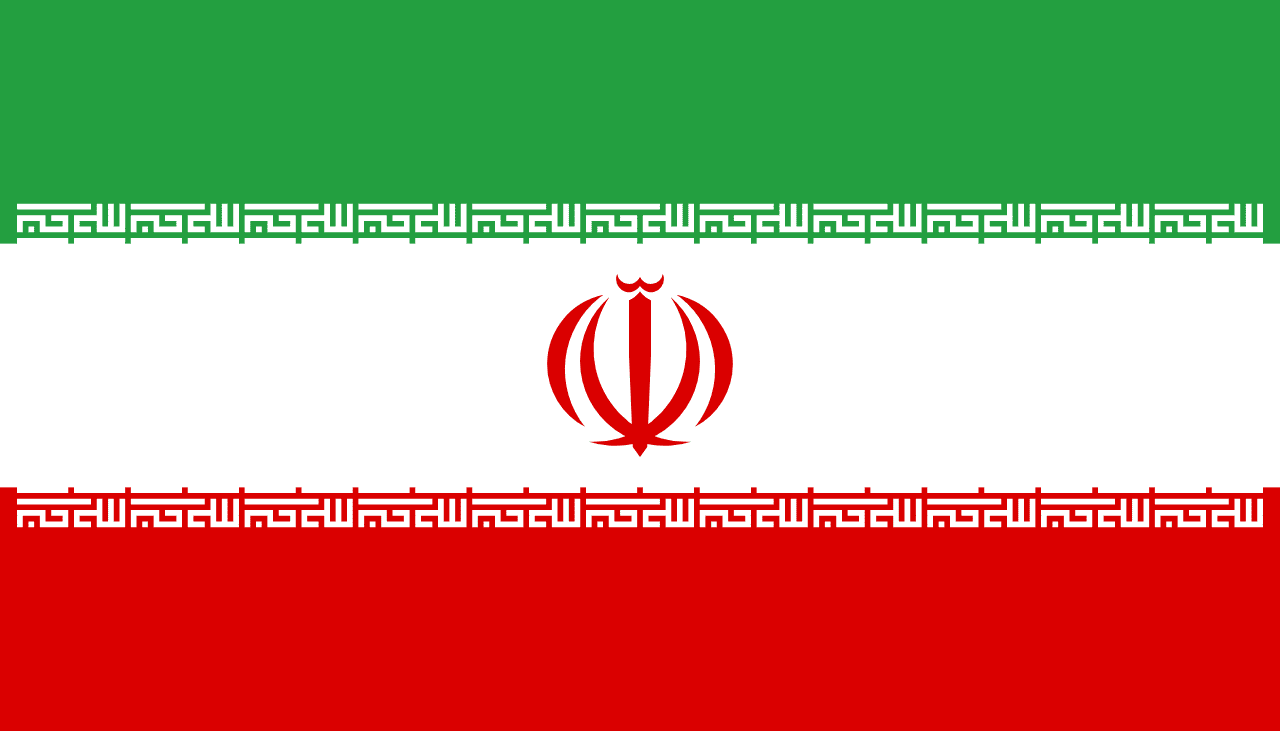
Iran
Adopted 1980
Three horizontal stripes of green, white, and red with a stylized emblem in the center and repeated 'Allahu Akbar' text along the borders, representing the Islamic Republic of Iran and the principles of the 1979 Islamic Revolution.
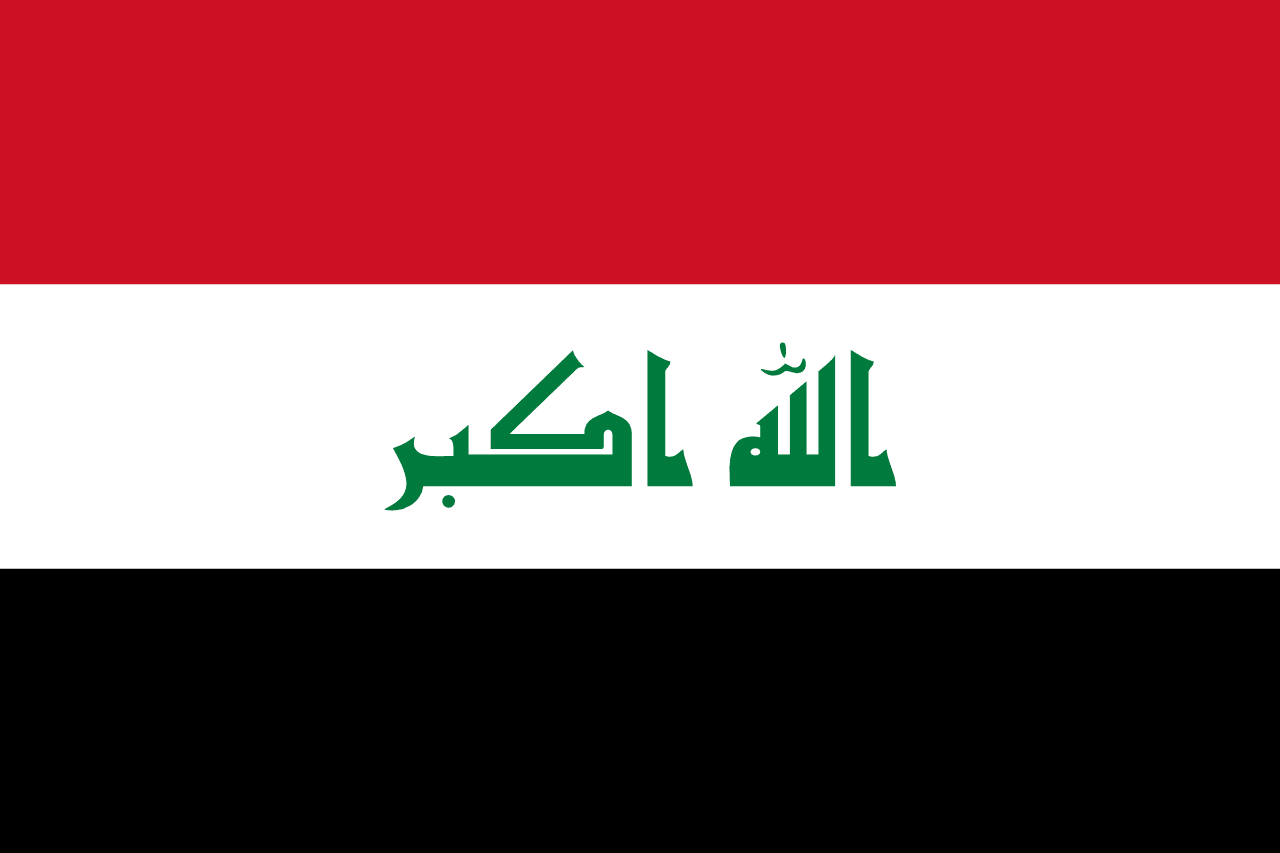
Iraq
Adopted 2008
Three horizontal stripes of red, white, and black (Pan-Arab colors) with 'Allahu Akbar' (God is Greatest) written in green Arabic Kufic script across the white stripe, representing Arab unity, Islamic faith, and Iraqi sovereignty.
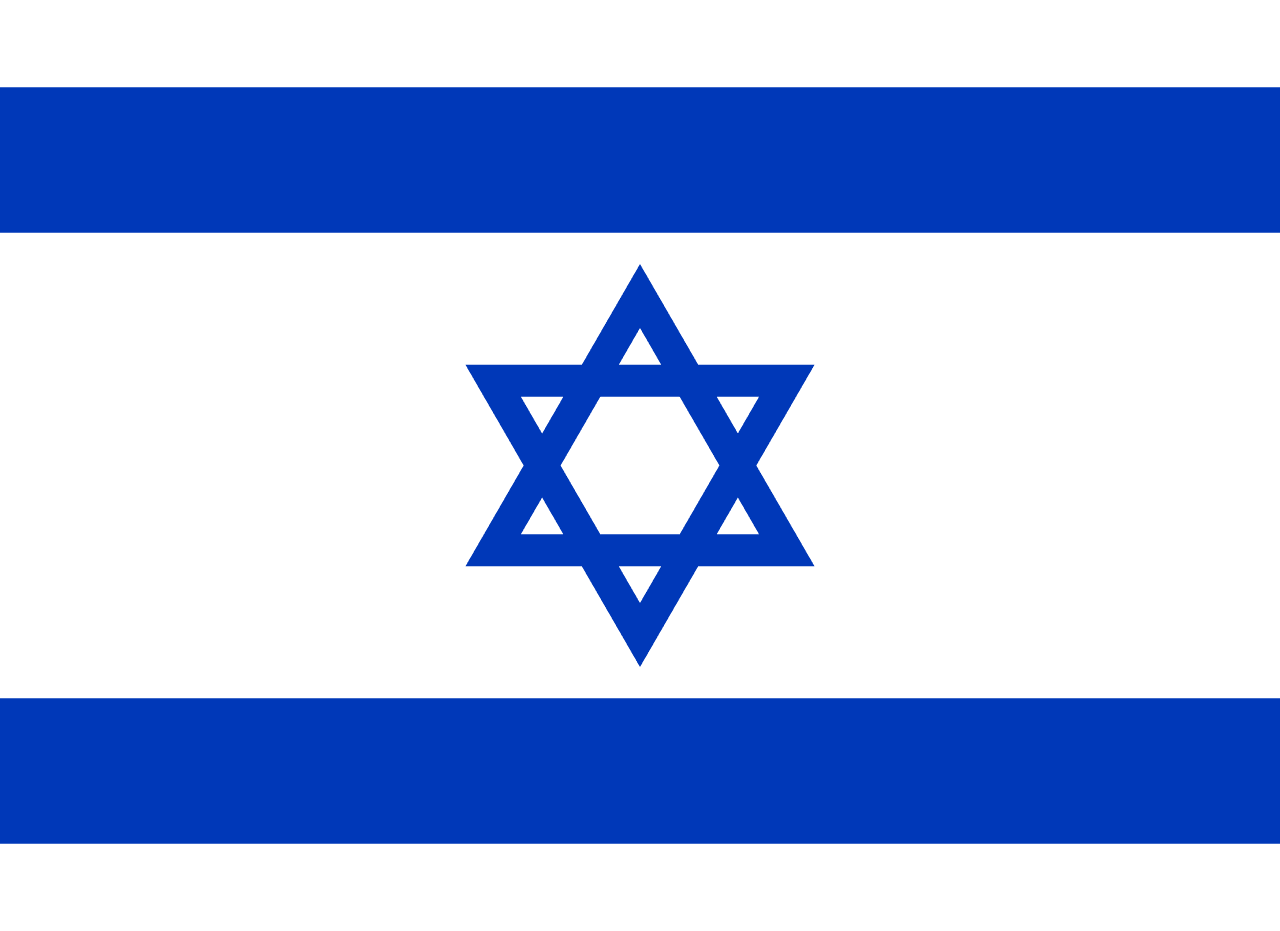
Israel
Adopted 1948
A white field with two horizontal blue stripes near the top and bottom edges and a blue Star of David (Magen David) in the center, based on the design of the traditional Jewish prayer shawl (tallit) and representing Jewish heritage and the modern State of Israel.
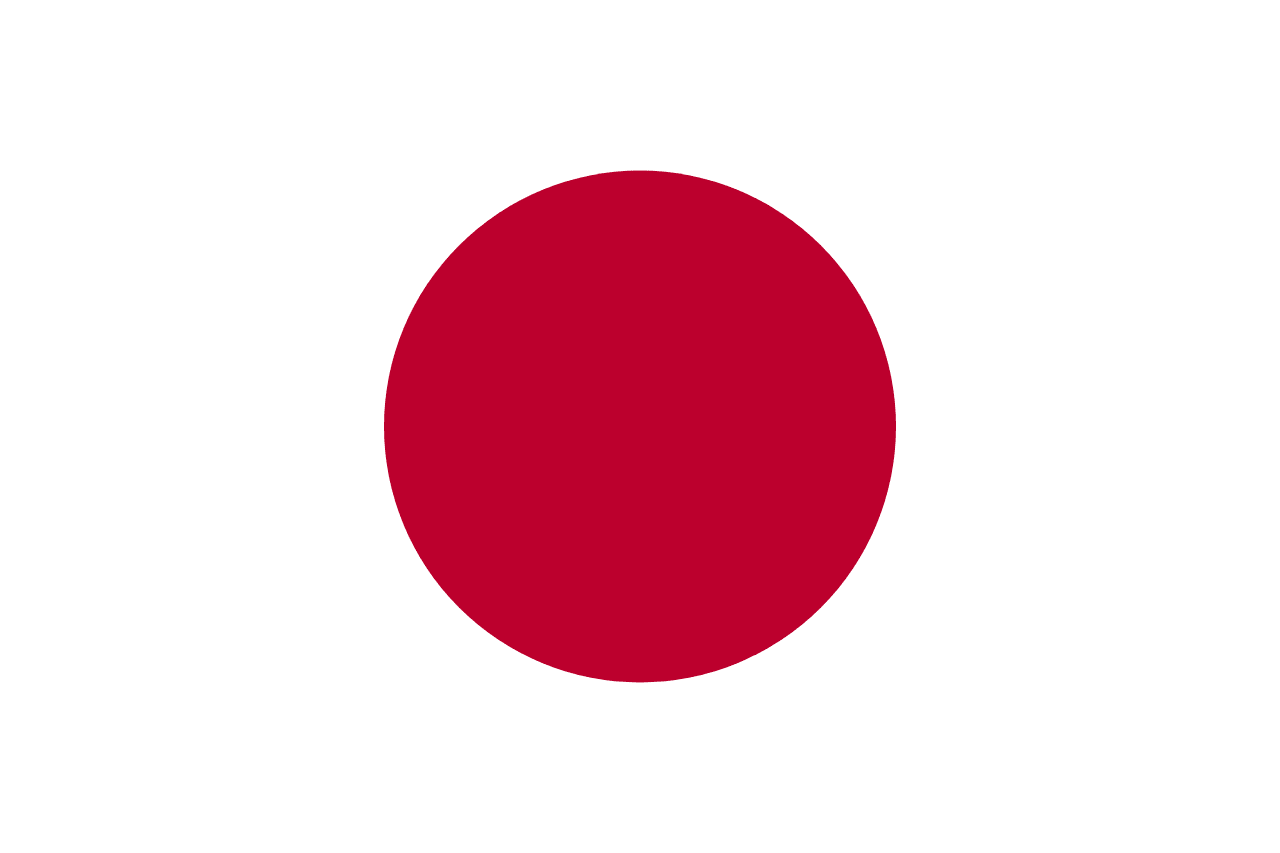
Japan
Adopted 1999
Hinomaru - the rising sun disc on white field, one of the world's oldest flag designs representing Japan as the 'Land of the Rising Sun'.
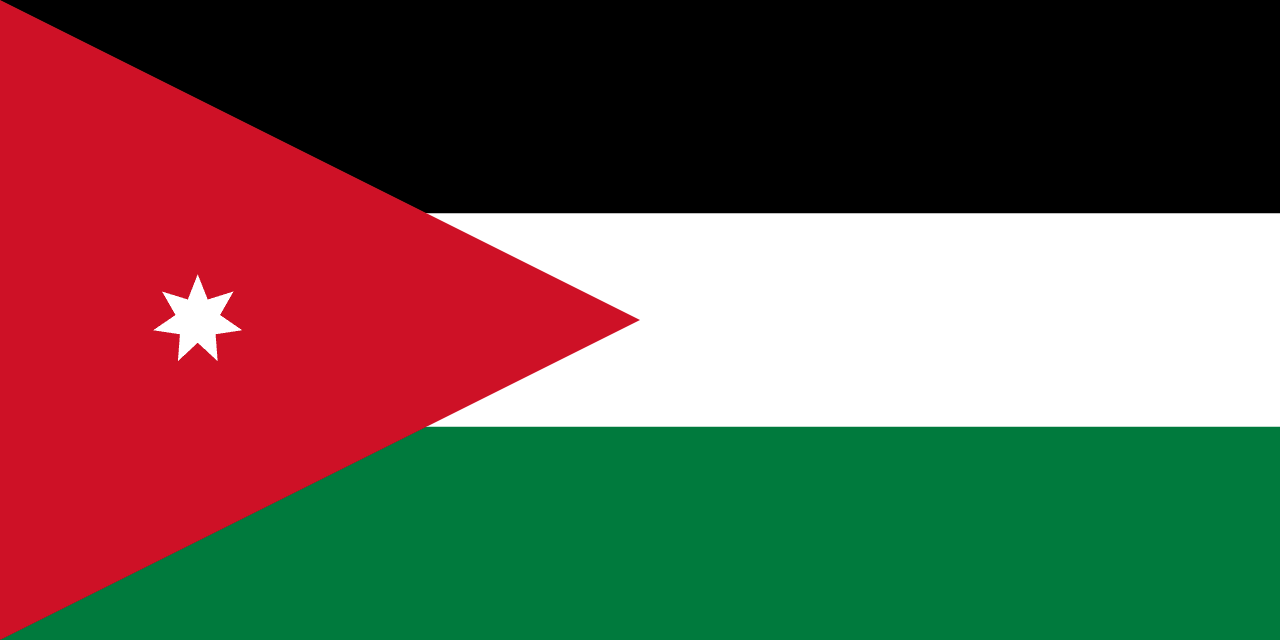
Jordan
Adopted 1928
Three horizontal stripes of black, white, and green with a red triangle on the hoist side containing a seven-pointed white star, representing the Arab Revolt heritage and the Hashemite Kingdom's role as guardian of Islamic holy sites.
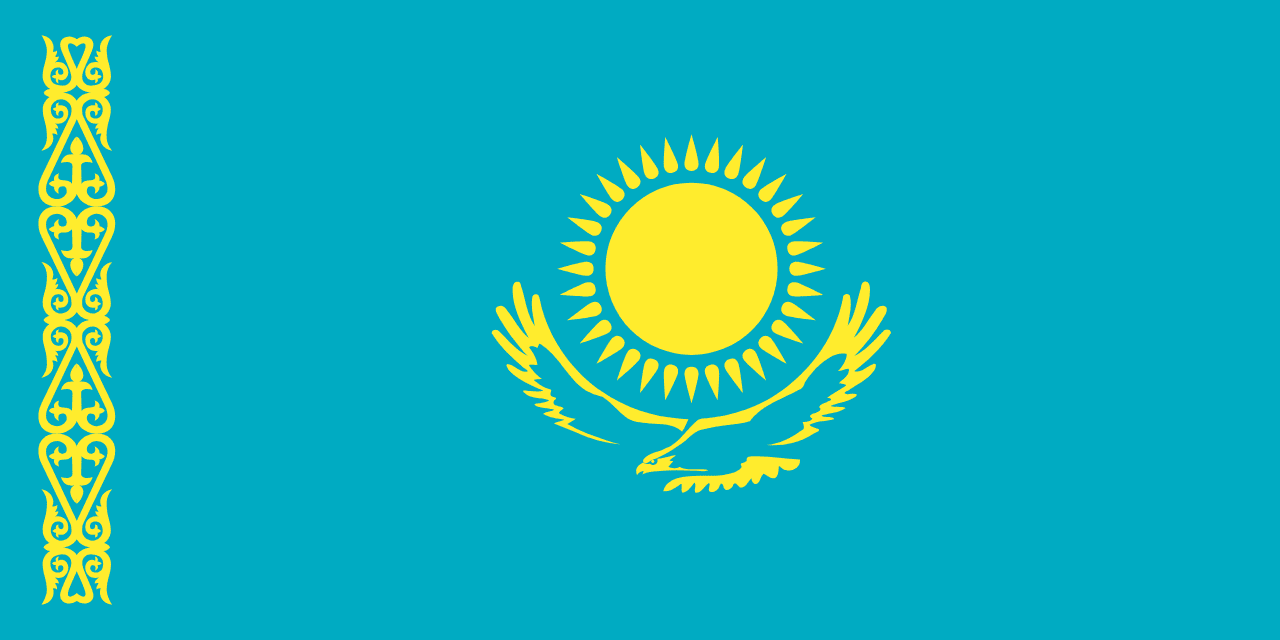
Kazakhstan
Adopted 1992
A turquoise field with a golden sun and soaring eagle in the center, and a traditional ornamental pattern on the hoist side, representing the eternal blue sky, freedom, and the rich nomadic heritage of the world's largest landlocked country.
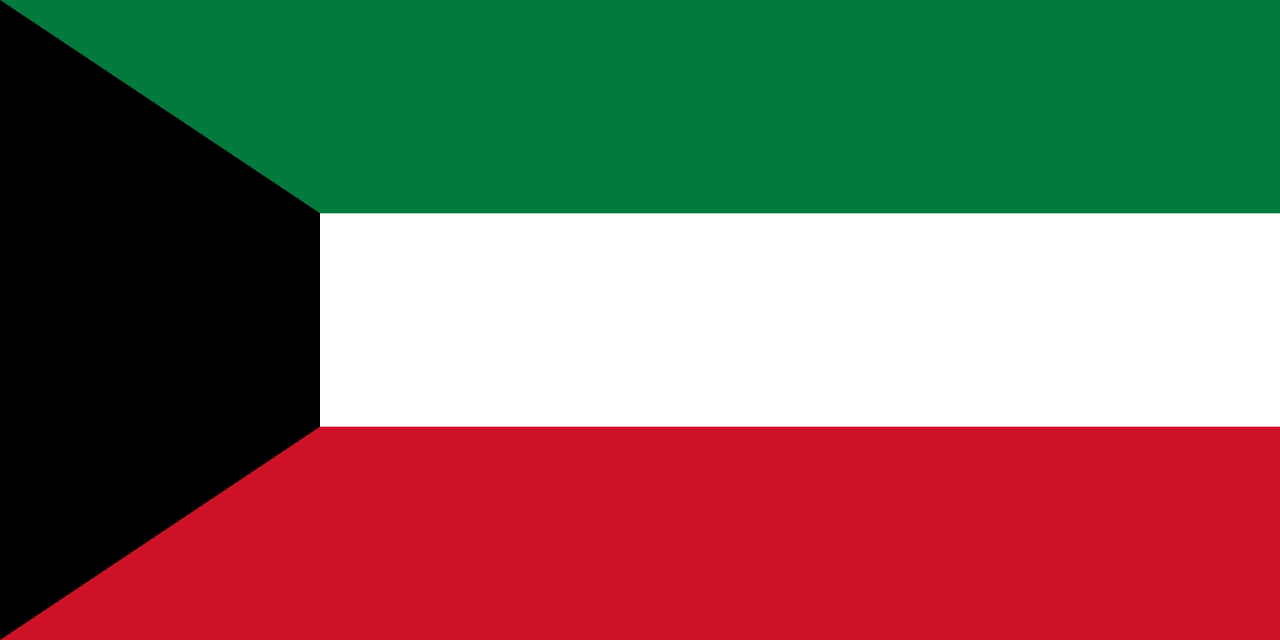
Kuwait
Adopted 1961
Three horizontal stripes of green, white, and red with a black trapezoid on the hoist side, representing Kuwait's position in the Arab world and its transformation from pearl diving to oil wealth in the Arabian Gulf.
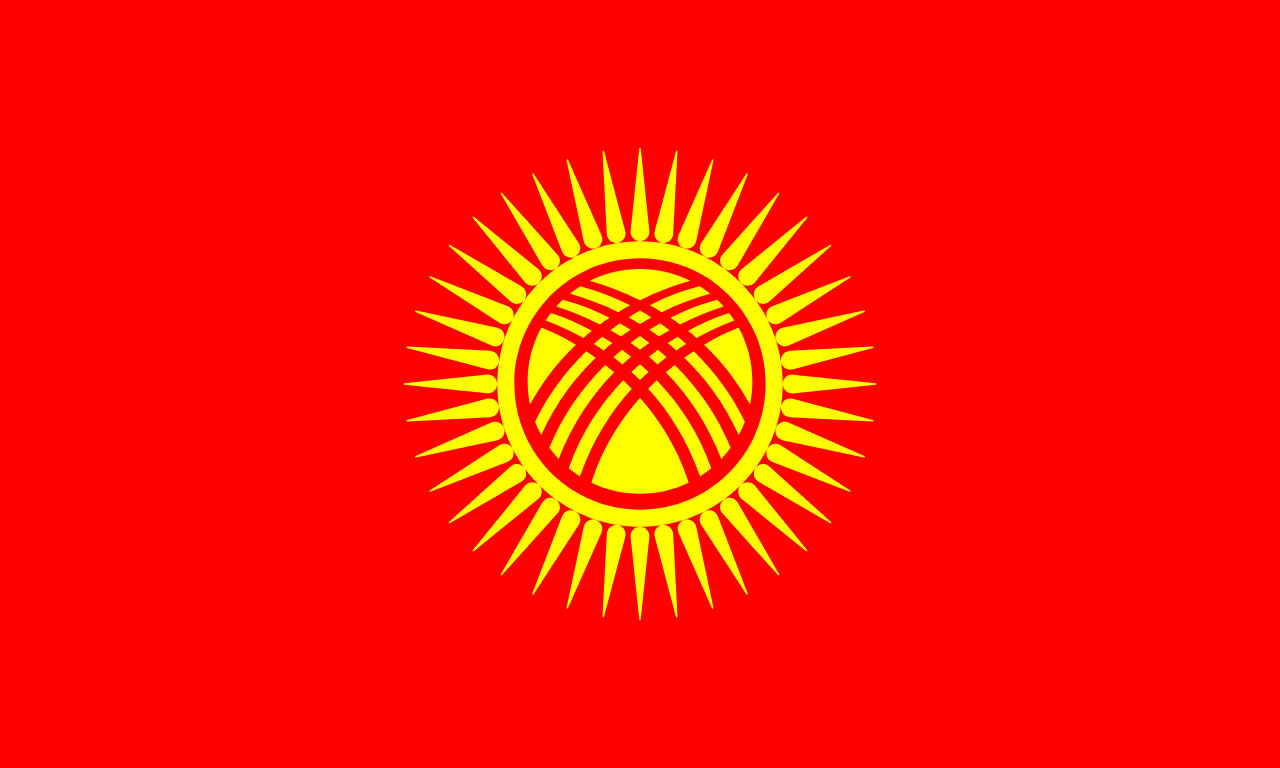
Kyrgyzstan
Adopted 1992
A red field with a yellow sun featuring 40 rays and a tunduk (yurt crown) in the center, representing the nomadic heritage, unity of 40 tribes, and the traditional dwelling of the Kyrgyz people in this mountainous Central Asian nation.
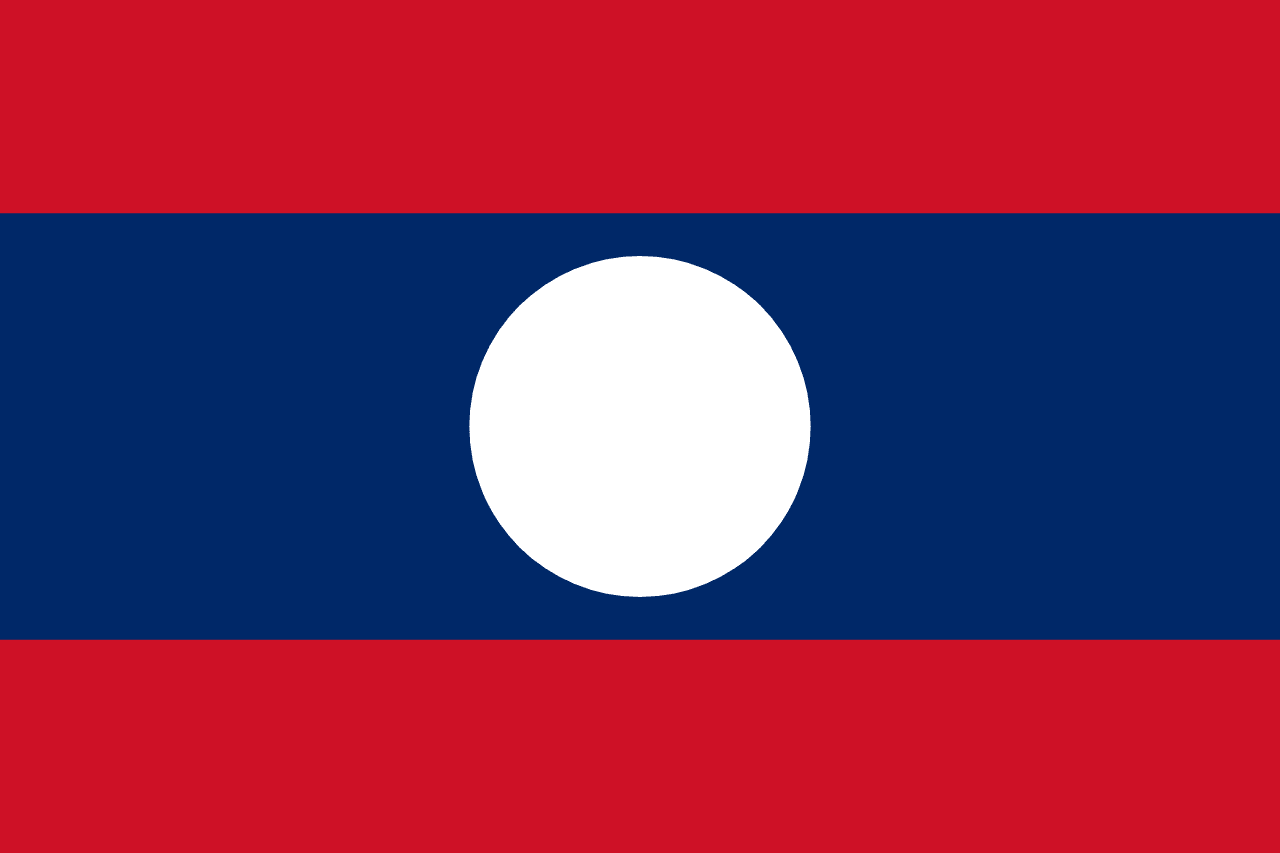
Laos
Adopted 1975
Three horizontal stripes of red, blue, and red with a white circle centered on the blue stripe, representing the blood of independence, the Mekong River, and the full moon reflecting unity of the Lao people.
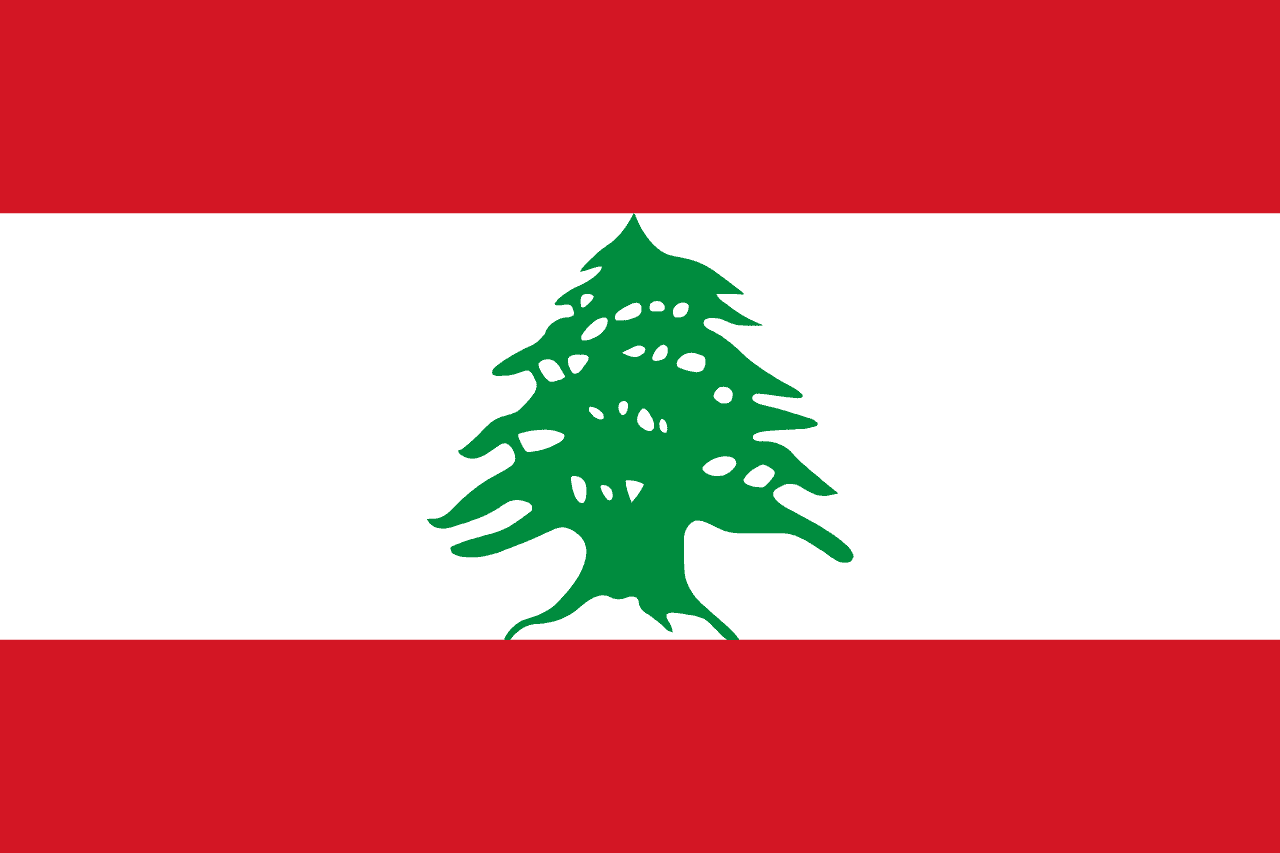
Lebanon
Adopted 1943
Two horizontal red stripes separated by a white stripe twice their width, with a green cedar tree centered on the white stripe, representing the strength, purity, and eternal heritage of the 'Land of the Cedars.'

Malaysia
Adopted 1963
Fourteen alternating red and white stripes with a blue canton containing a yellow crescent and 14-pointed star, representing the federation of Malaysian states and territories united under Islam and royal authority.
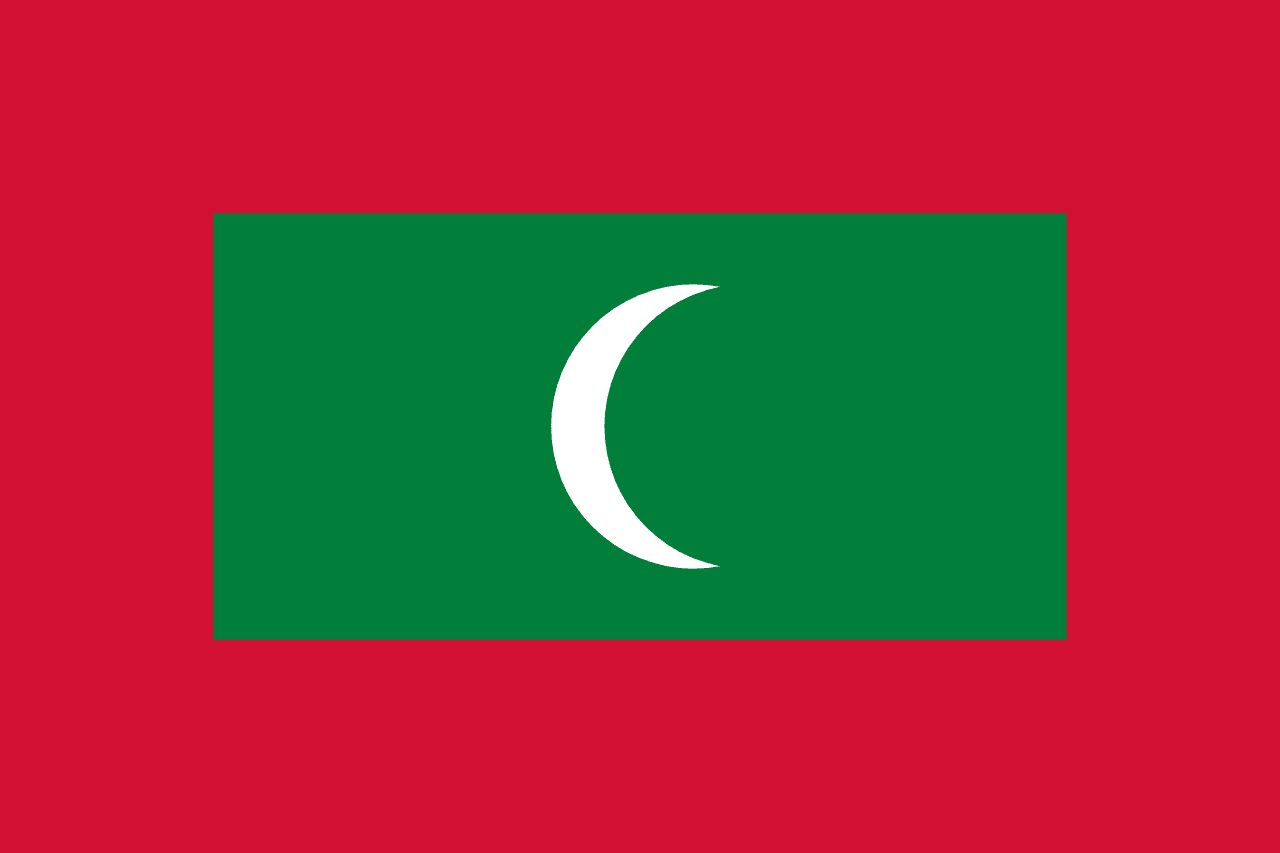
Maldives
Adopted 1965
A green rectangle centered on a red field with a white crescent facing the hoist, representing Islam, the peace of the islands, and the blood of heroes who defended this coral atoll nation in the Indian Ocean.
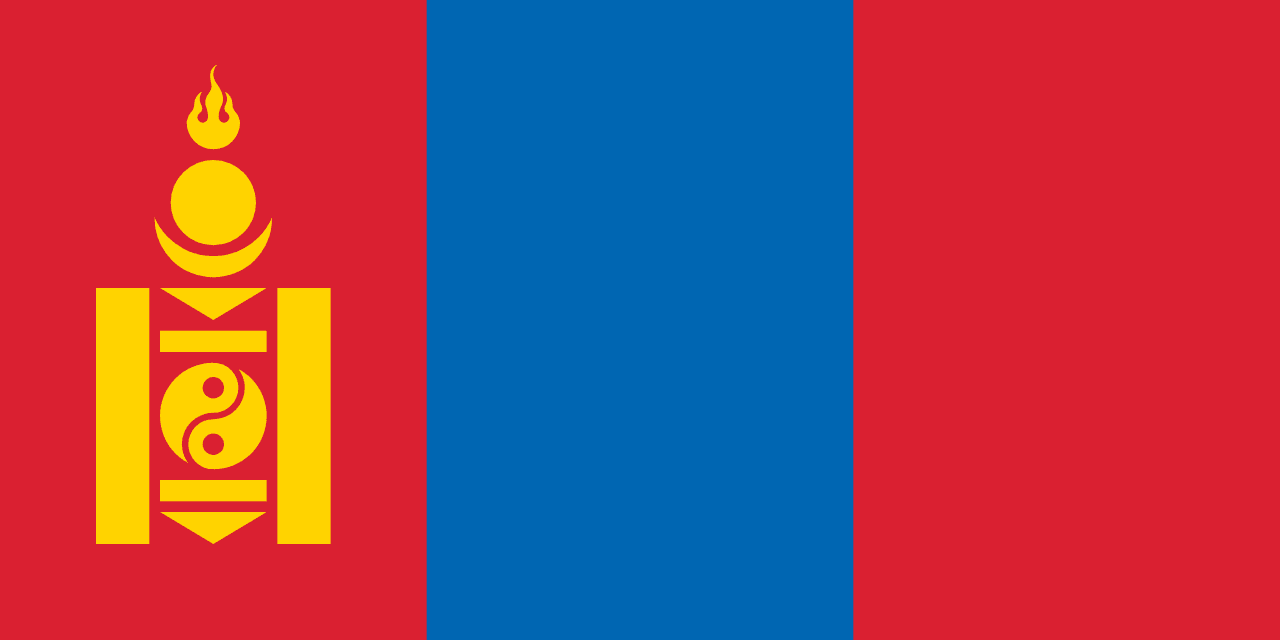
Mongolia
Adopted 1992
Three vertical stripes of red, blue, and red with the ancient Soyombo symbol in yellow on the hoist-side red stripe, representing Mongolia's transition to democracy and its deep philosophical traditions rooted in Tengrism and Buddhism.
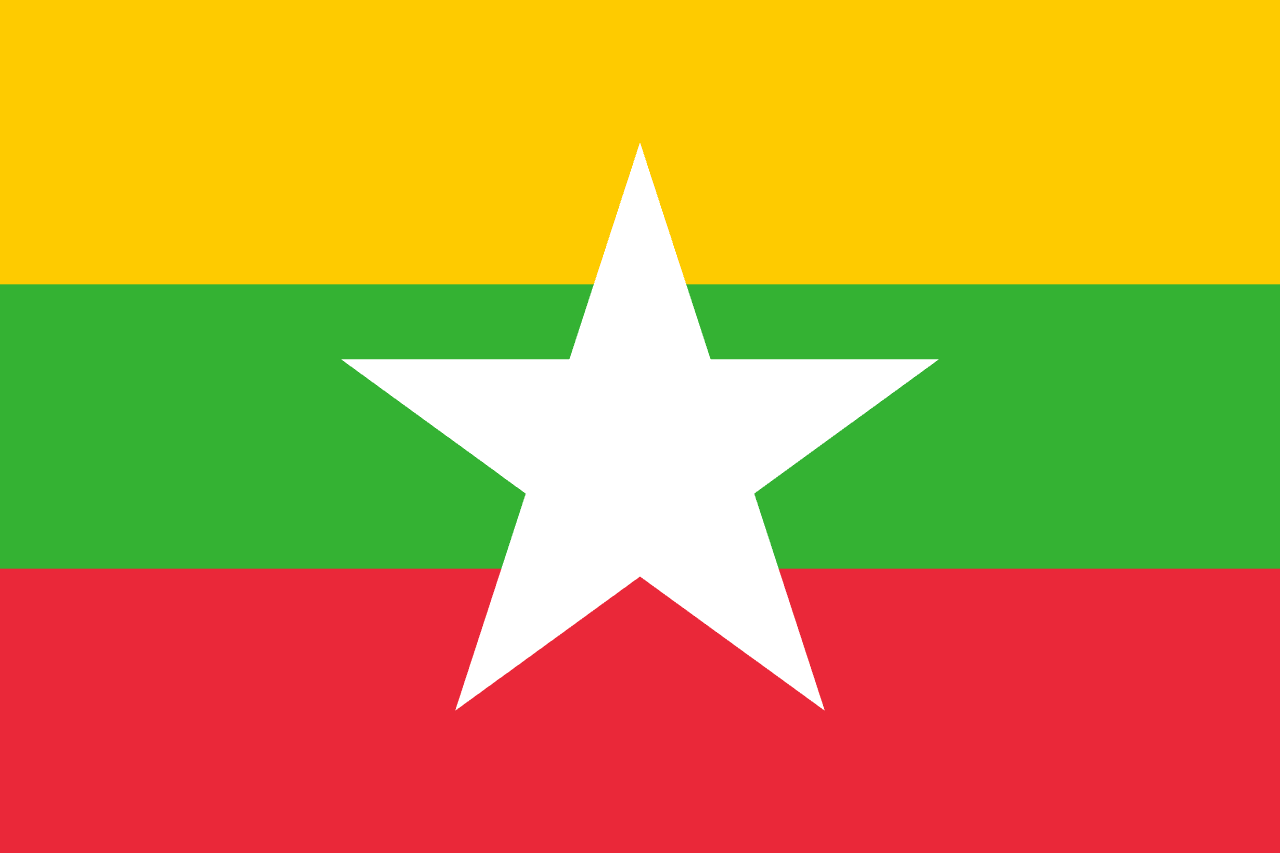
Myanmar
Adopted 2010
A horizontal tricolor of yellow, green, and red with a large white five-pointed star in the center. Adopted in 2010, the flag symbolizes unity and a new era for Myanmar.
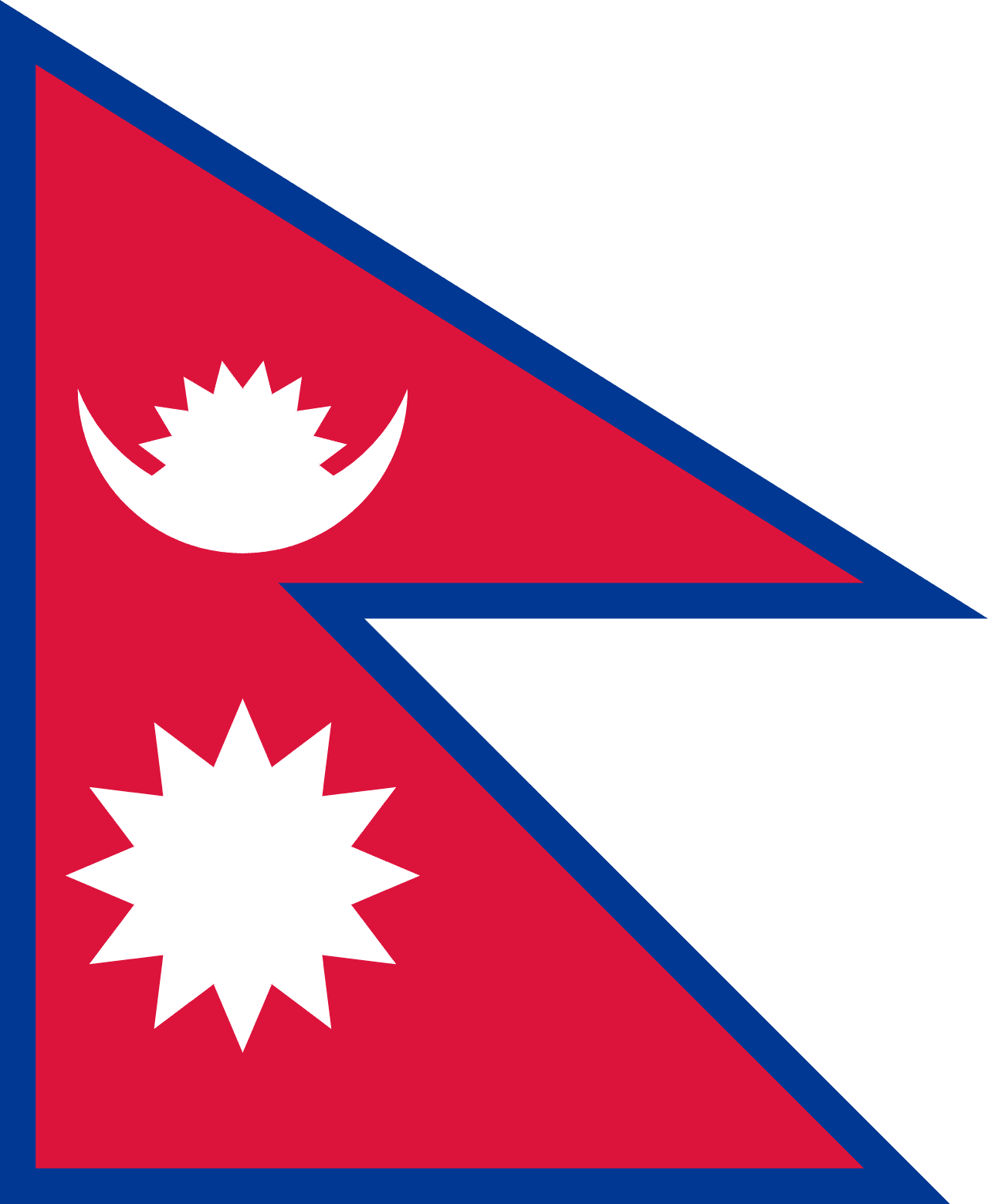
Nepal
Adopted 1962
The only national flag that is non-rectangular, composed of two stacked crimson pennons with blue borders, featuring a white moon and a white sun. It reflects Nepal’s distinct identity, culture, and Hindu-Buddhist traditions.
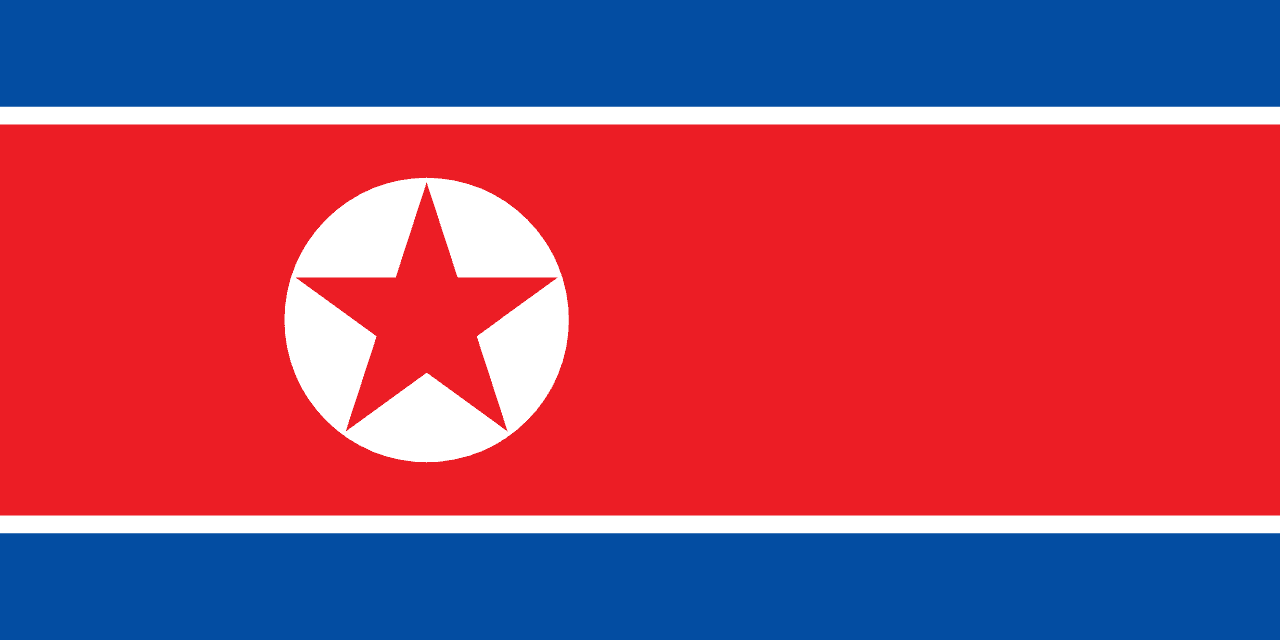
North Korea
Adopted 1948
The flag of North Korea, adopted in 1948, combines red, white, and blue with a central red star. Its design reflects socialist symbolism while incorporating elements rooted in Korean identity. For the state, it represents revolution, unity, and loyalty, while for observers it has become one of the most recognizable emblems of the modern Korean peninsula.
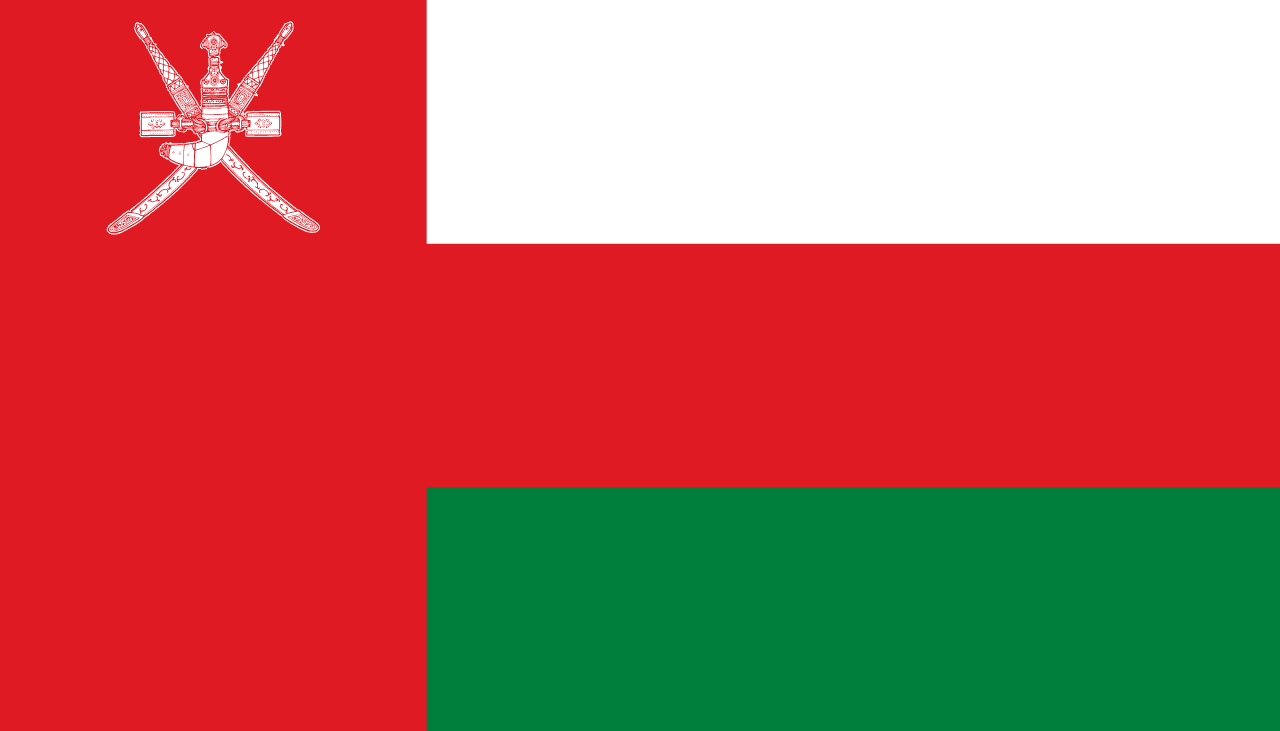
Oman
Adopted 1995
Three horizontal stripes of white, red, and green with a vertical red band at the hoist containing the national emblem. The design reflects Oman’s heritage, unity, and natural environment.
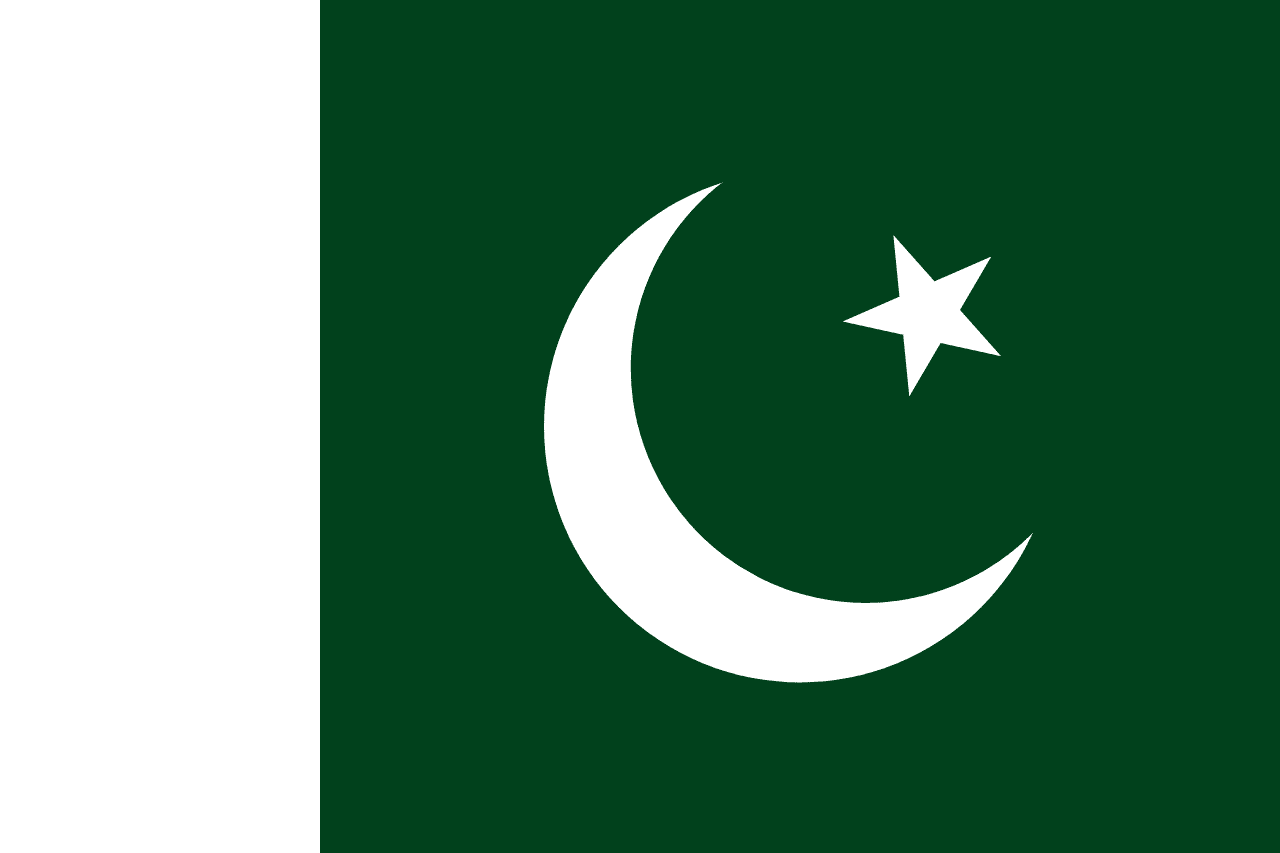
Pakistan
Adopted 1947
A green field with a white vertical stripe at the hoist, a white crescent, and a five-pointed star. The flag symbolizes Islam, religious minorities, and the guiding ideals of the nation.

Philippines
Adopted 1898
A horizontal bicolor of blue over red with a white equilateral triangle at the hoist, containing a golden sun and three golden stars. The Philippine flag is unique in that it is inverted in wartime, with the red field displayed on top.

Qatar
Adopted 1971
A national flag divided vertically with a broad white band on the hoist and a larger maroon field separated by nine white serrated points. Qatar’s unique flag ratio and color reflect its history and independence.
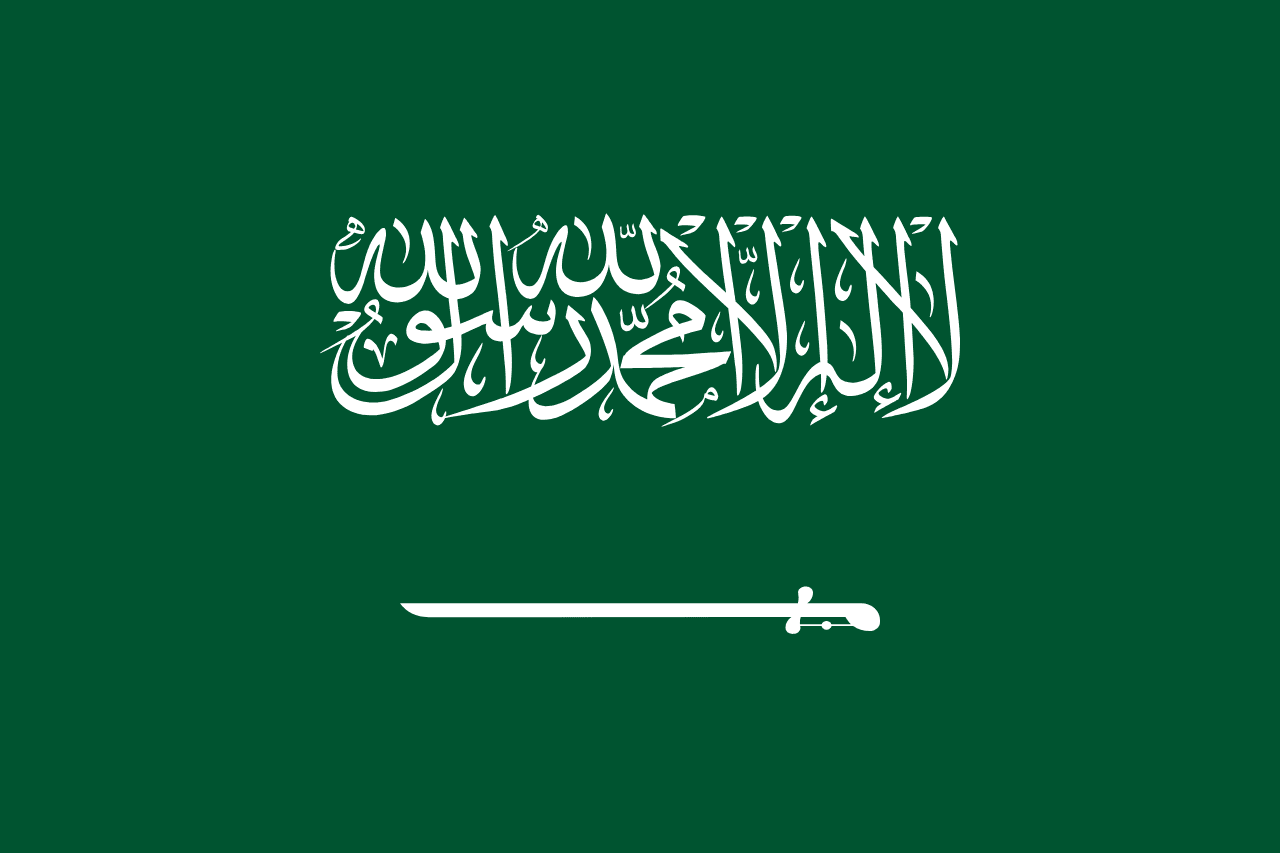
Saudi Arabia
Adopted 1973
A green field with the Islamic declaration of faith (shahada) in white above a horizontal sword. The design emphasizes Islam as the foundation of the state.
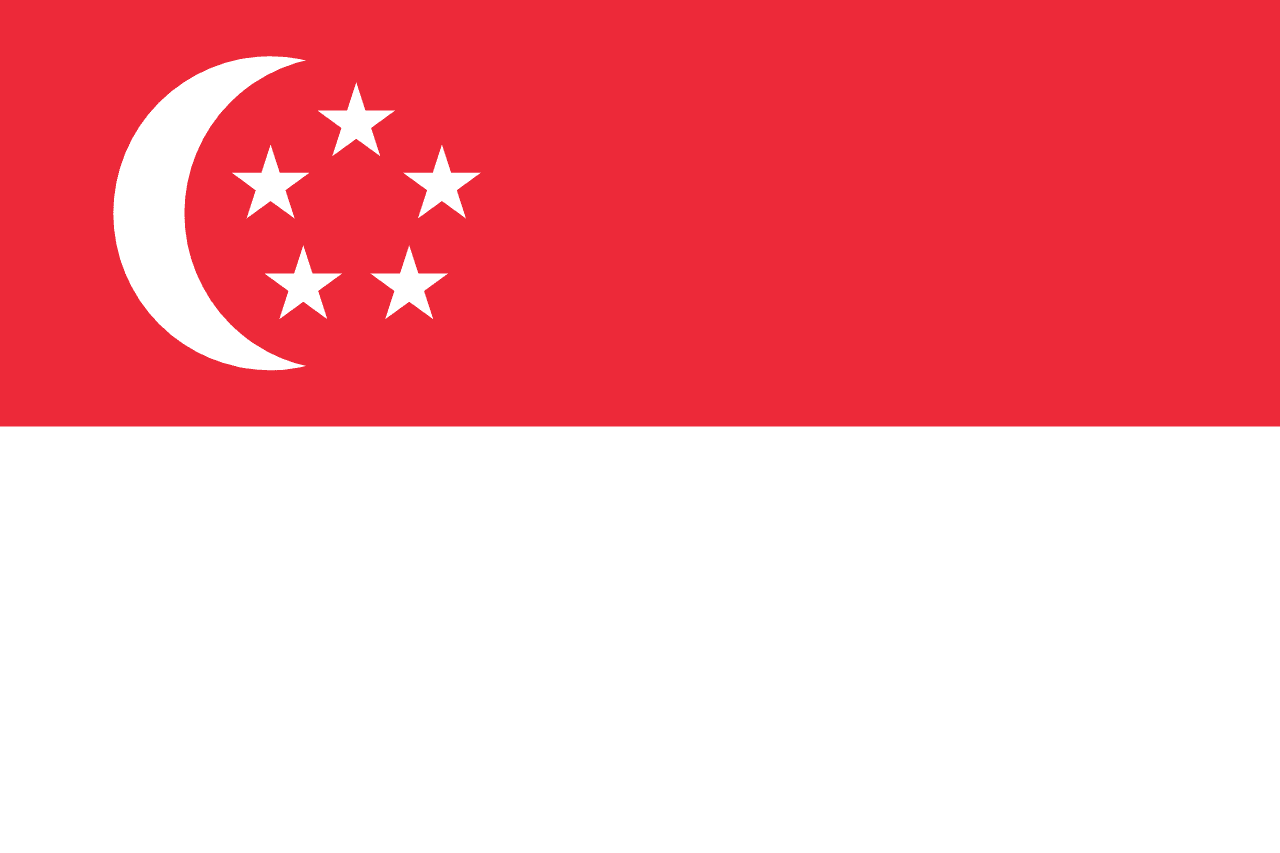
Singapore
Adopted 1959
A bicolor flag with a red upper half and white lower half. In the upper hoist is a white crescent moon beside five white five-pointed stars arranged in a circle. The flag symbolizes Singapore’s ideals of unity, progress, and multicultural harmony.
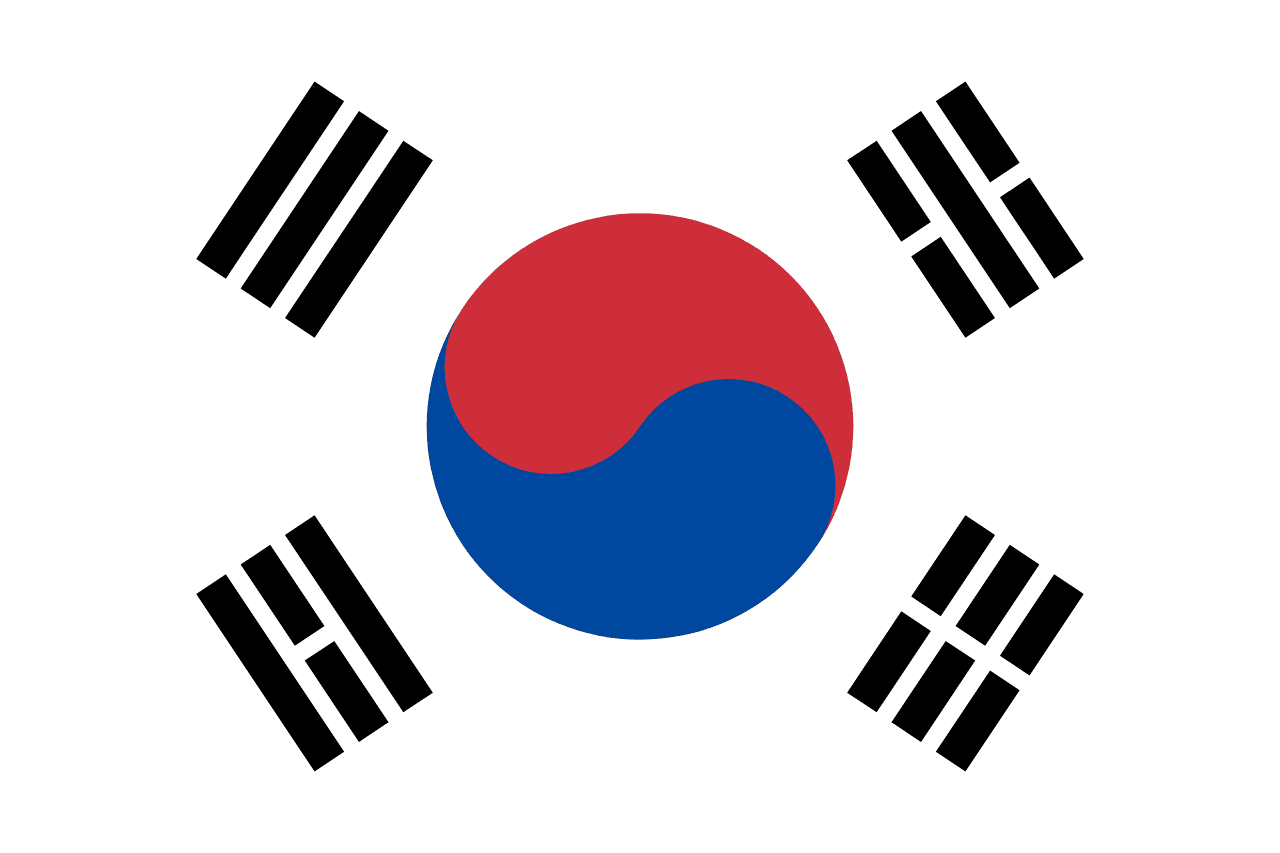
South Korea
Adopted 1949
A white field with a red and blue taegeuk (yin-yang symbol) in the center surrounded by four black trigrams from the I Ching, representing the harmony of opposites, the balance of natural forces, and the philosophical foundations of Korean civilization dating back thousands of years.
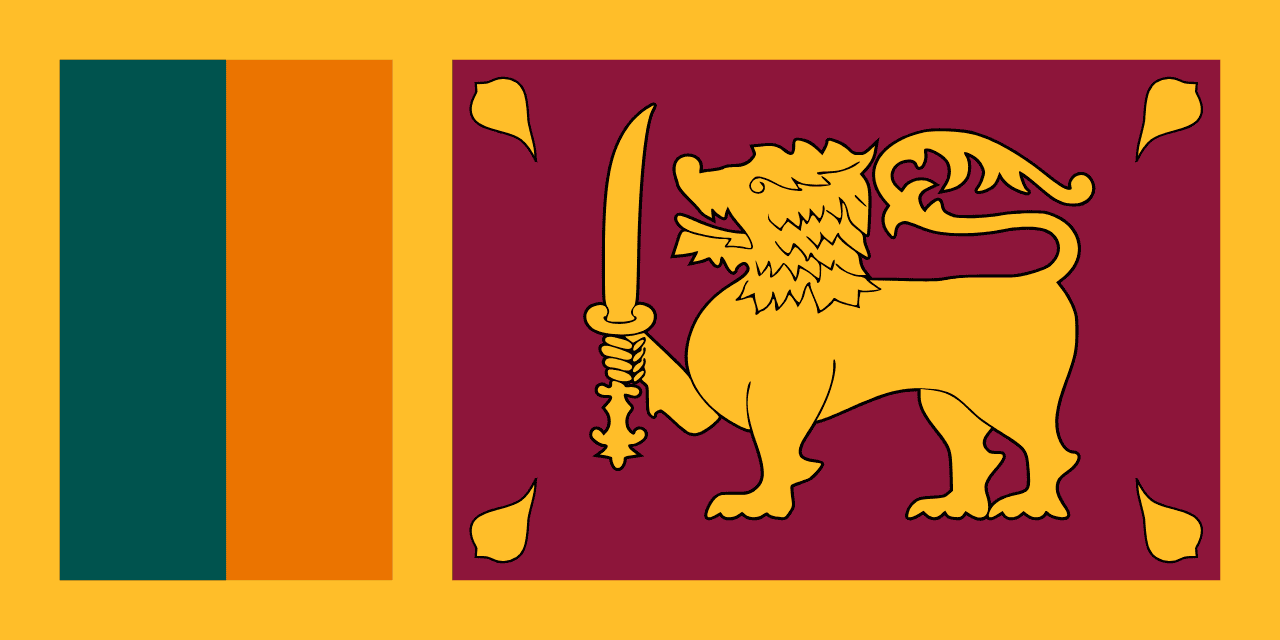
Sri Lanka
Adopted 1972
A maroon field with a golden lion holding a sword, surrounded by four golden bo leaves, with vertical stripes of orange and green on the hoist side, representing the Sinhalese majority, Tamil and Muslim minorities, Buddhism, and the courage and strength of the Sri Lankan people.
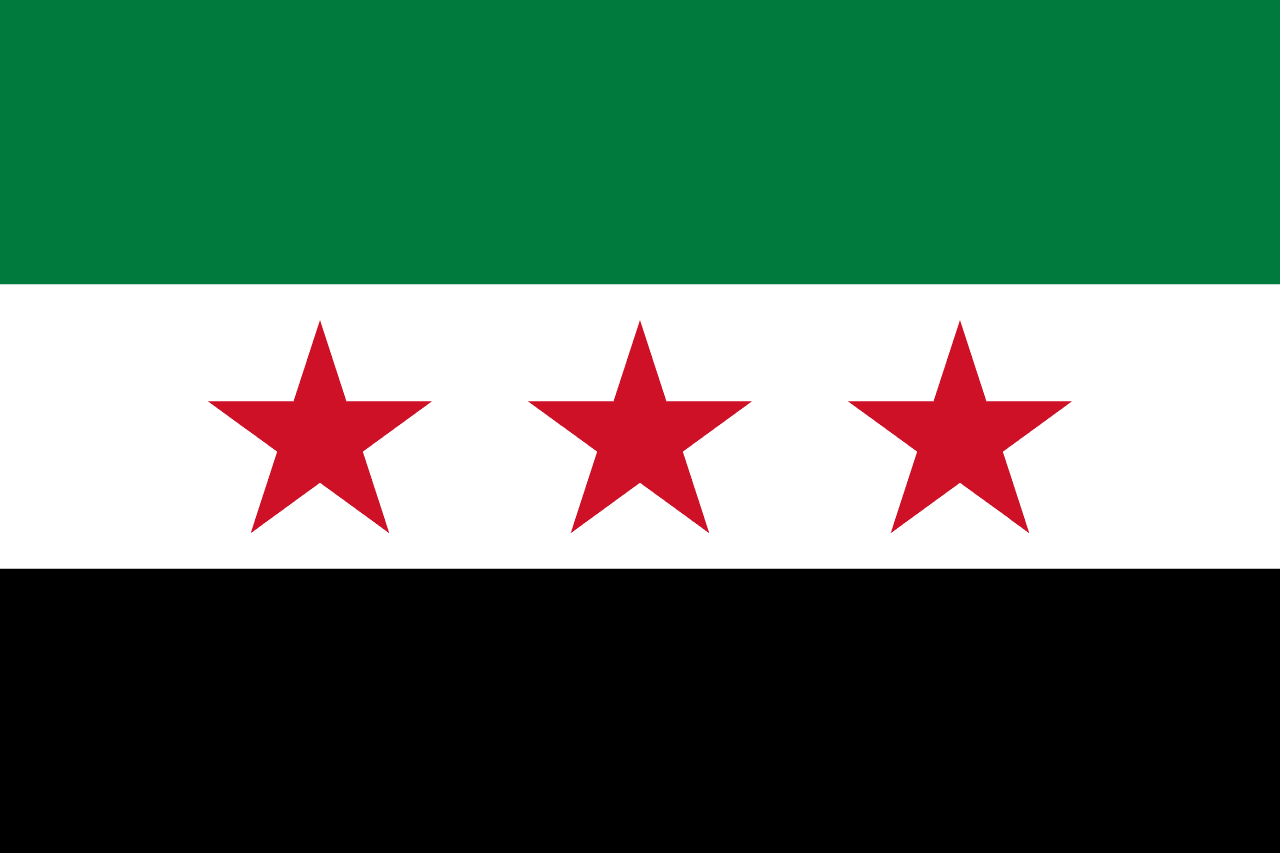
Syria
Adopted 1980
Three horizontal stripes of red, white, and black with two green five-pointed stars on the white stripe, representing the Pan-Arab colors of liberation struggles, the Hashemite flag heritage, and the Ba'ath Party's Arab socialist ideology that has governed Syria since 1963.

Taiwan
Adopted 1928
A red field with a blue canton containing a white twelve-pointed sun, representing the Republic of China flag adopted in 1928, symbolizing the Three Principles of the People (nationalism, democracy, livelihood), the twelve traditional Chinese hours, and the aspiration for progress and development.
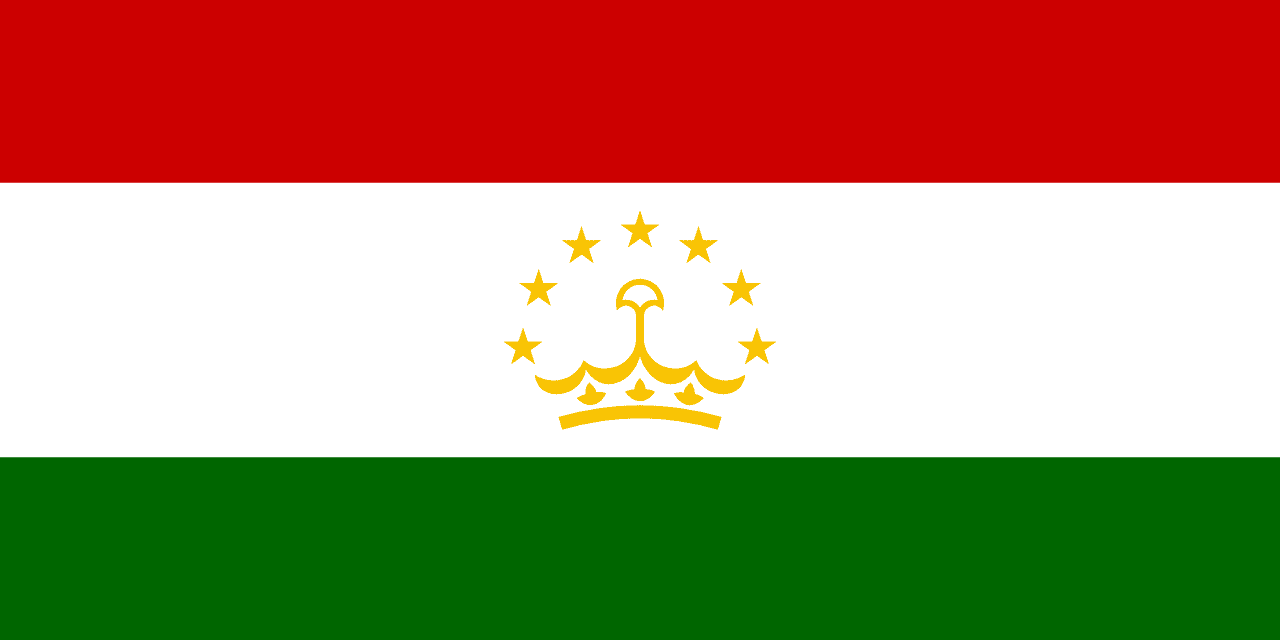
Tajikistan
Adopted 1992
Three horizontal stripes of red, white, and green with a golden crown topped by seven stars in the center of the white stripe, representing the unity of workers and peasants, cotton and snow-capped mountains, the verdant valleys, and the Somoni crown symbolizing Tajik sovereignty and the seven regions of historical Tajikistan.

Thailand
Adopted 1917
Five horizontal stripes with red at top and bottom, white in the second and fourth positions, and blue in the center, representing the nation and the people, the purity of Buddhism, and the monarchy, designed by King Rama VI during World War I to show solidarity with the Allies.

Turkey
Adopted 1936
The flag of Turkey is bold and simple in design with a red field with a white crescent moon and five-pointed star slightly off-center toward the hoist. This represents the blood of martyrs who died for the country, Islam, and the guidance of the state, with symbols that have ancient origins in Turkic and Ottoman traditions.
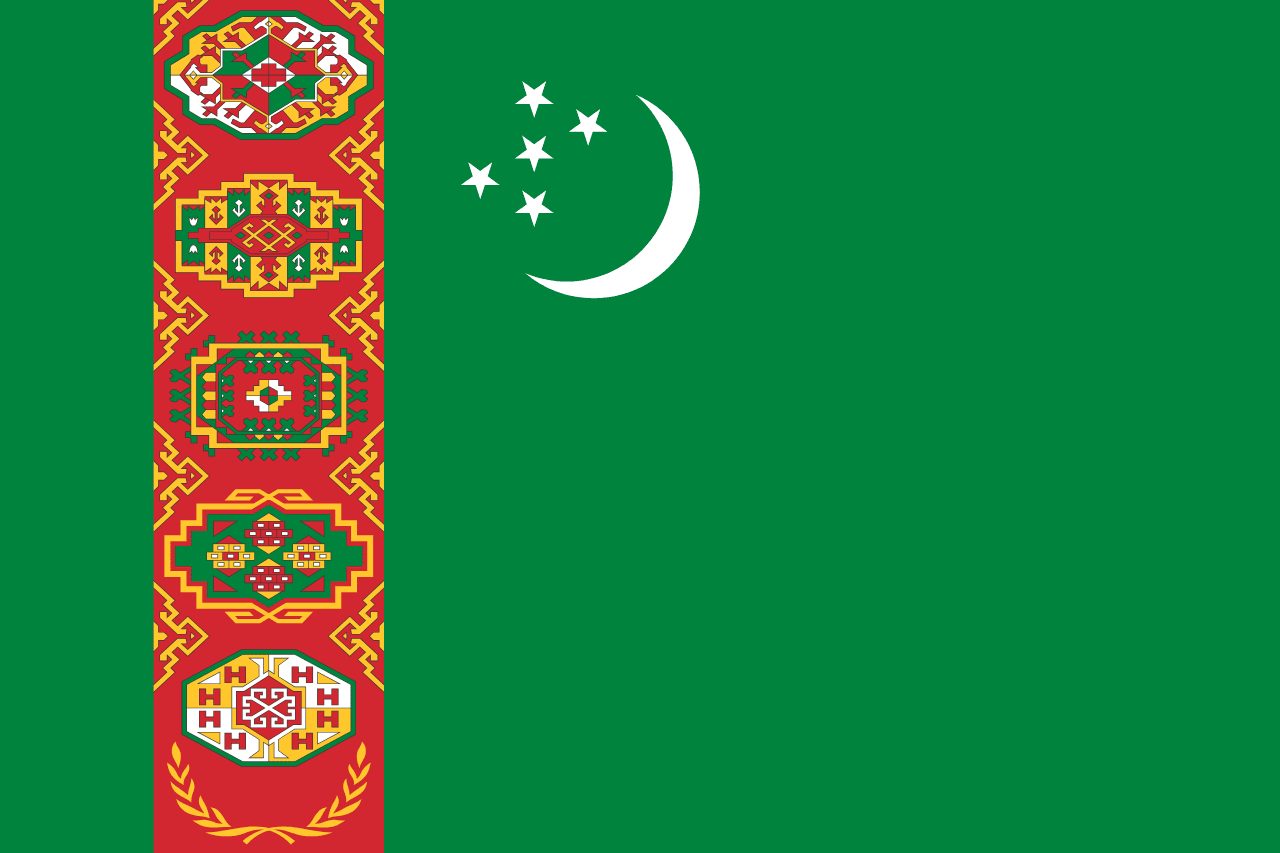
Turkmenistan
Adopted 1992
A green field with a vertical red stripe containing five traditional carpet guls (patterns) on the hoist side, and a white crescent moon with five stars in the upper left, representing Islam, the traditional carpet weaving culture, neutrality, and the five regions and senses of Turkmenistan.
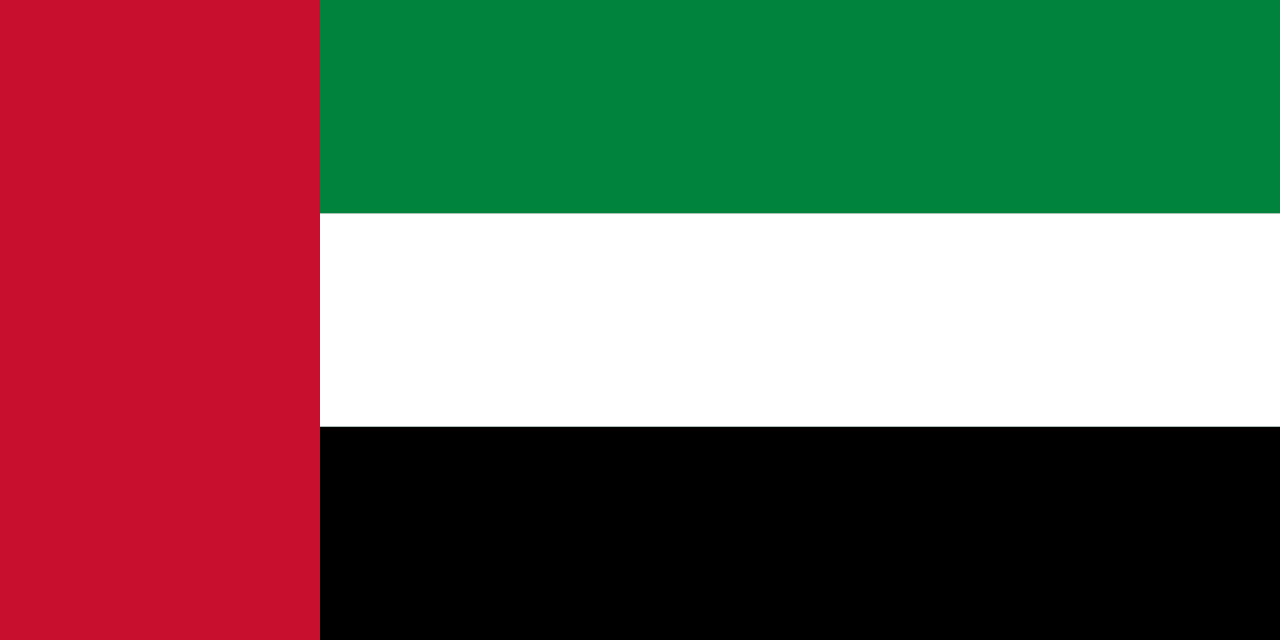
United Arab Emirates
Adopted 1971
A vertical red stripe at the hoist with three horizontal stripes of green, white, and black on the fly side, representing the Pan-Arab colors that symbolize Arab unity, fertility, peace, and the defeat of enemies, designed by a young Emirati and chosen from over 1,000 submissions.
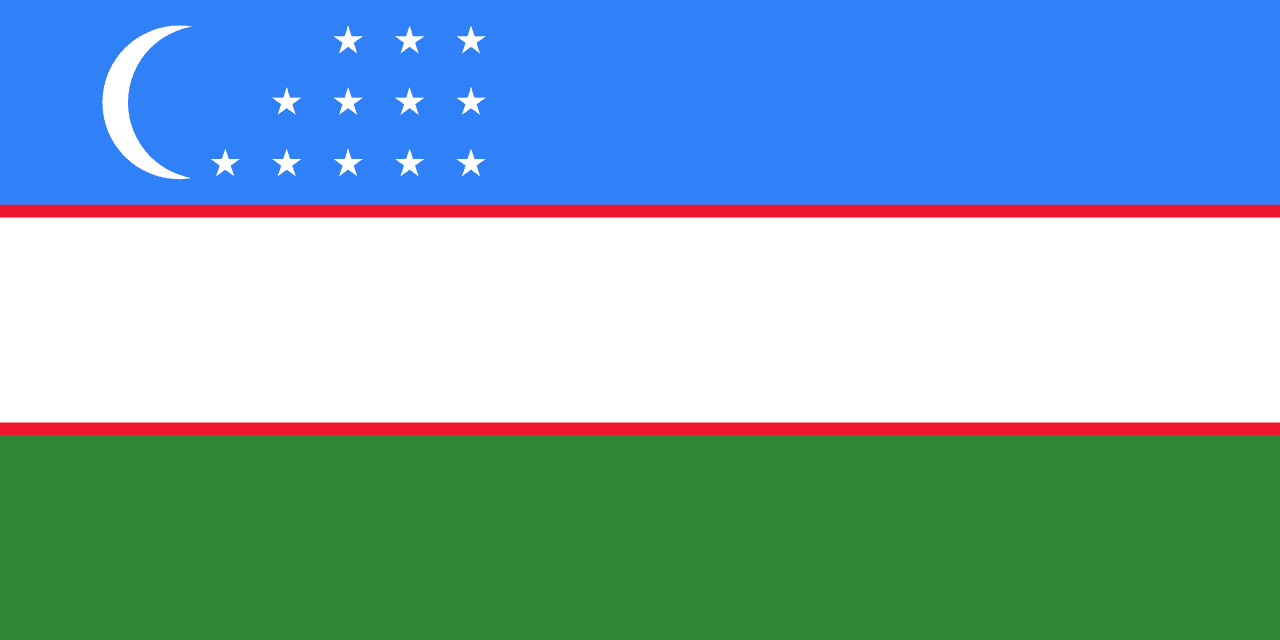
Uzbekistan
Adopted 1991
Three horizontal stripes of blue, white, and green separated by thin red stripes, with a white crescent moon and twelve white stars on the blue stripe, representing the sky and water, peace and purity, nature and fertility, the life force, the rebirth of Uzbekistan, and the twelve months of the year.
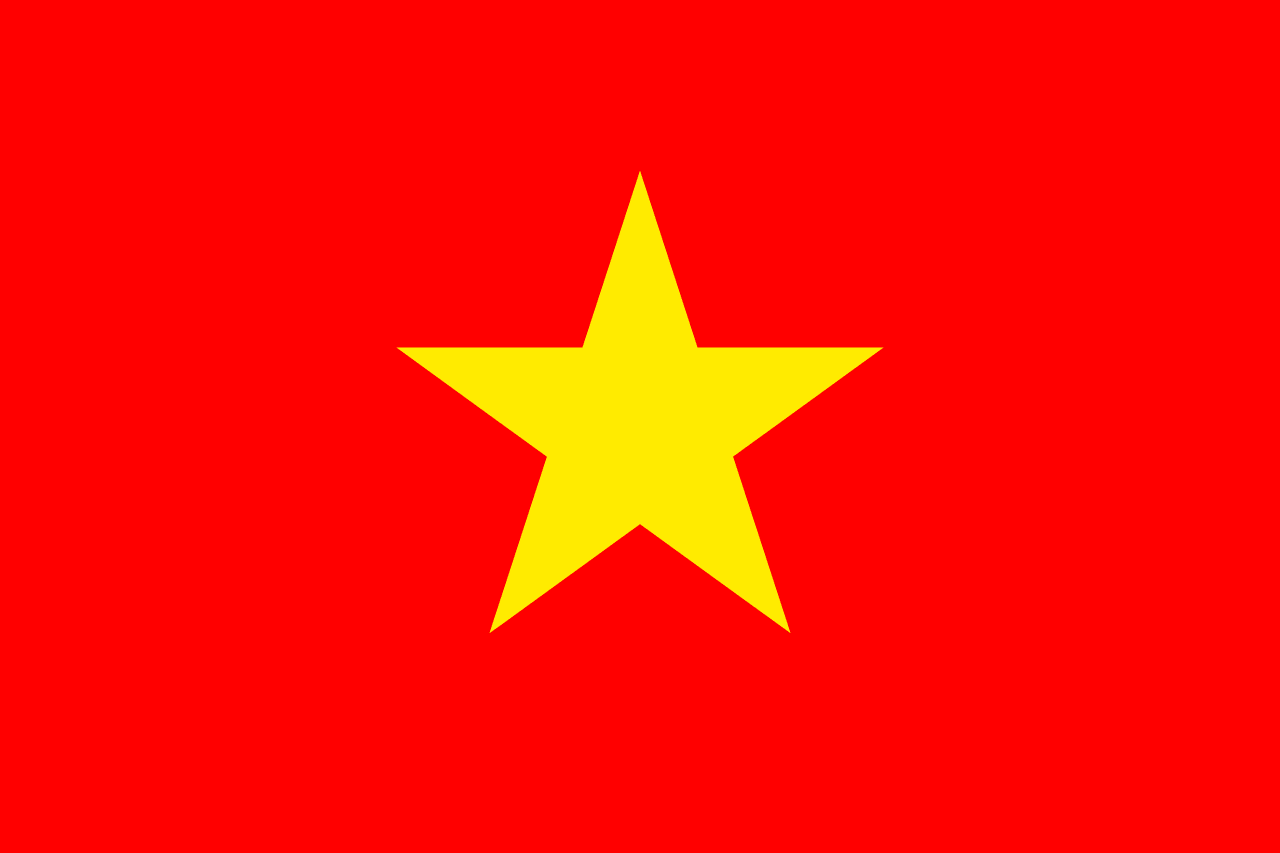
Vietnam
Adopted 1945
A red field with a large yellow five-pointed star in the center, representing the blood shed for independence and the unity of workers, peasants, intellectuals, youth, and soldiers under Communist Party leadership in the struggle for national liberation and socialist construction.
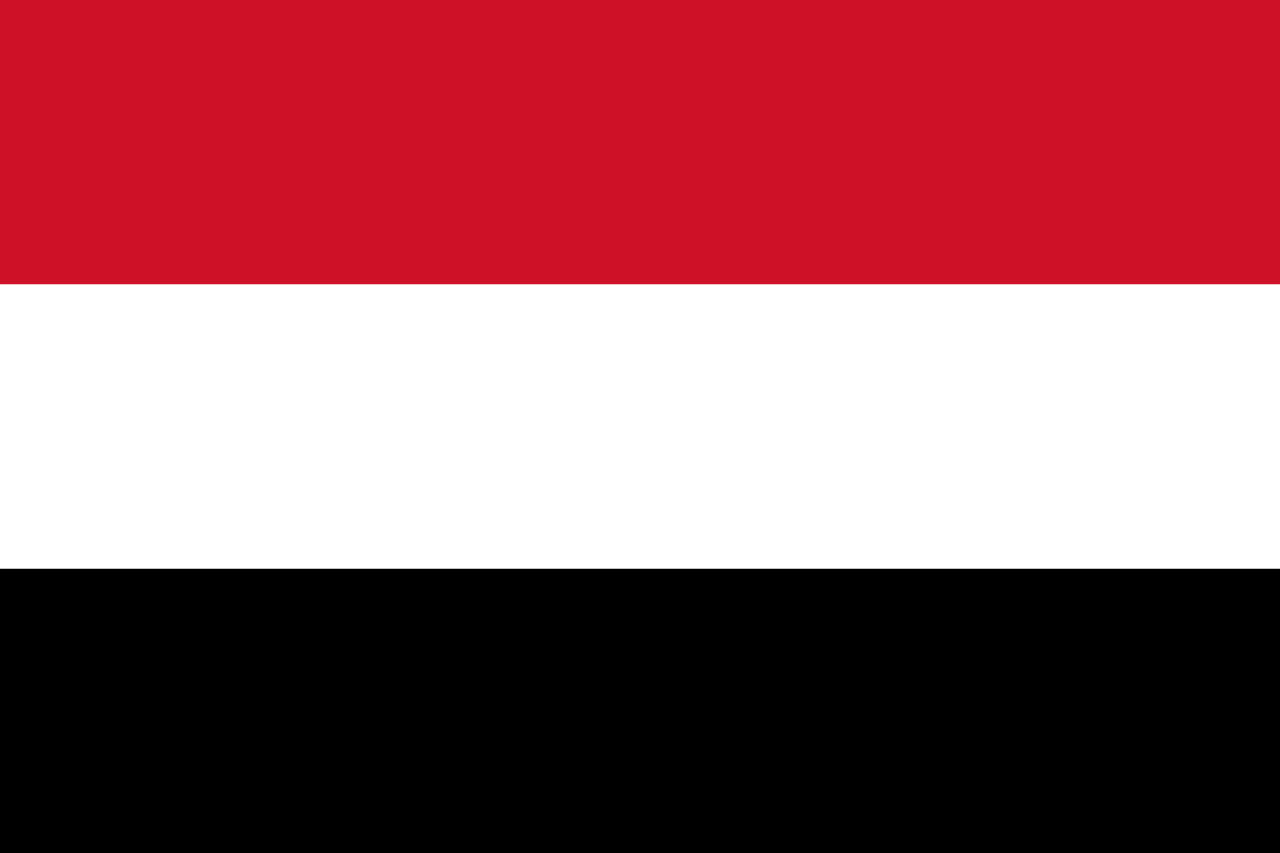
Yemen
Adopted 1990
Three horizontal stripes of red, white, and black representing the Pan-Arab colors that symbolize the bloodshed for freedom, bright future and peace, and the dark past of oppression, adopted when North and South Yemen unified into the Republic of Yemen.
About Asian Flags
Religious Influences
Asian flags often reflect the continent's diverse religious heritage, Islamic crescents, Buddhist wheels, Hindu symbols, and Confucian principles all appear in various flag designs.
Ancient Symbols
Many Asian flags incorporate ancient cultural symbols like dragons, sun discs, and traditional patterns that have represented these civilizations for thousands of years.
Modern Designs
From Singapore's modern symbolism to South Korea's ancient yin-yang, Asian flags blend traditional cultural elements with contemporary national identity and independence movements.